Spiti-Trek – Day 2: 3 x the highest – or not
15. October 2023
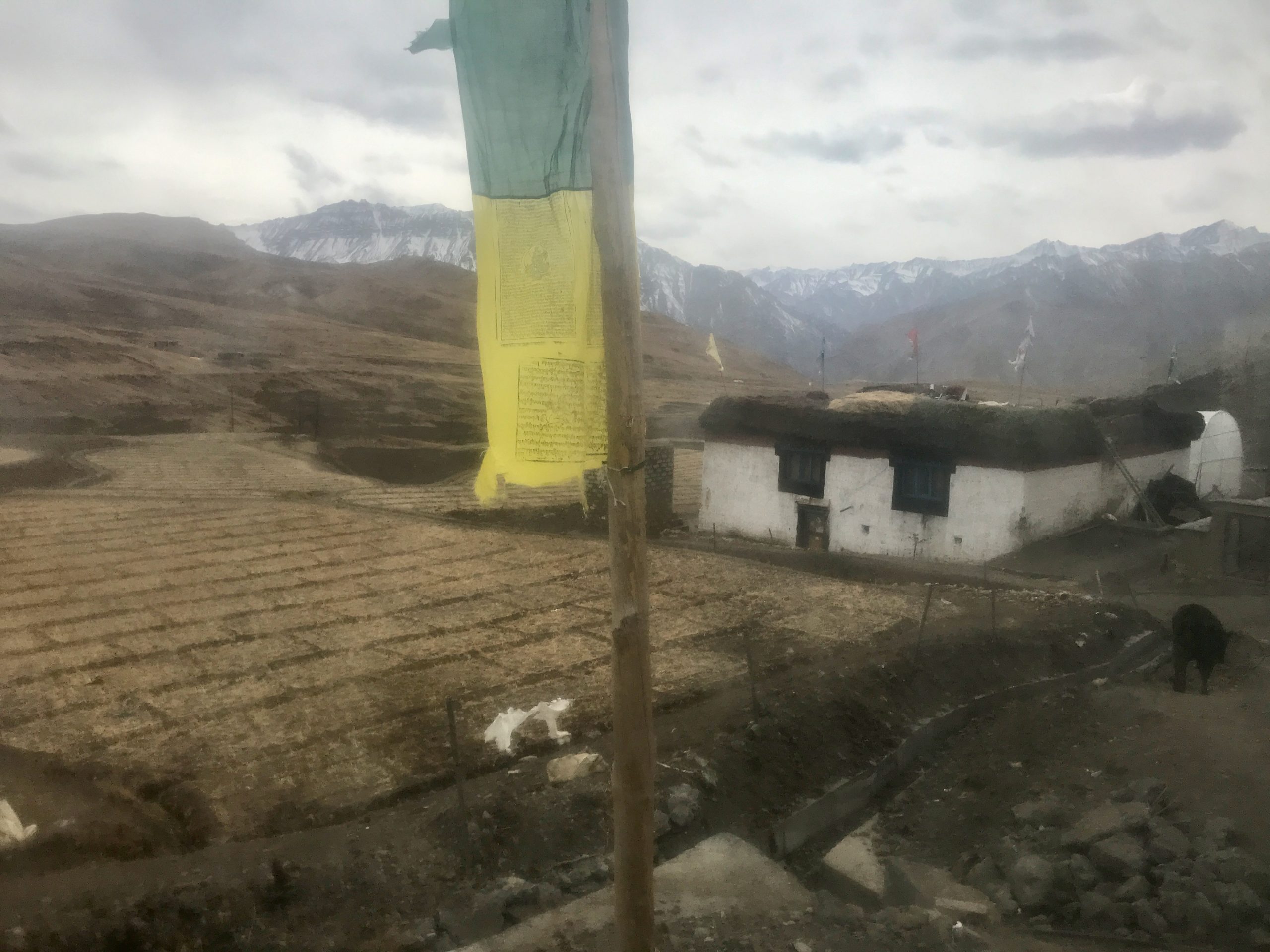
The morning view out of the window did not bode well for the weather. But I had warm clothes with me and was curious about what was to come, so I set off cheerfully.
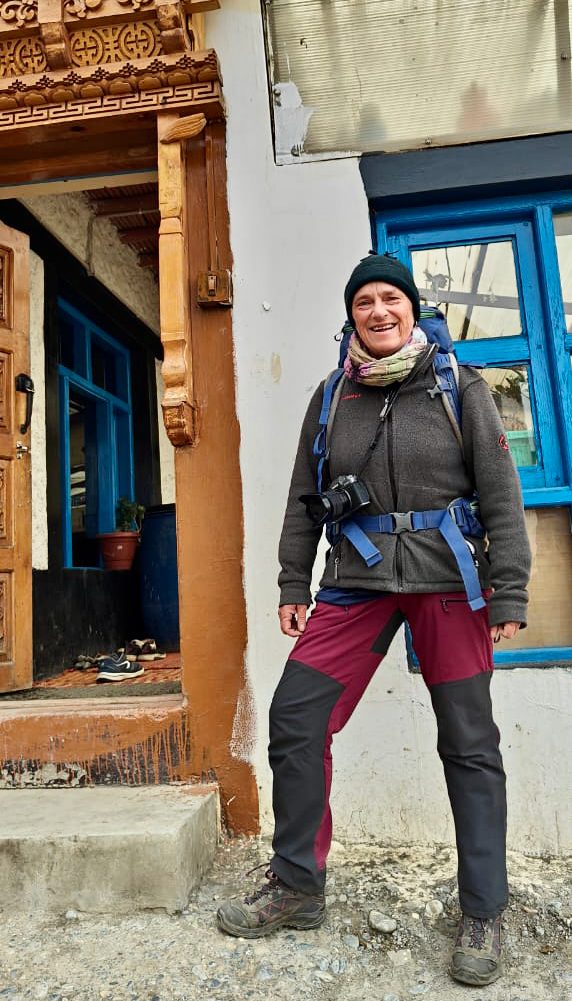 Start
Start
Despite the road, you don’t have to walk along it, but find good alternative paths. And so I left Langza behind me.
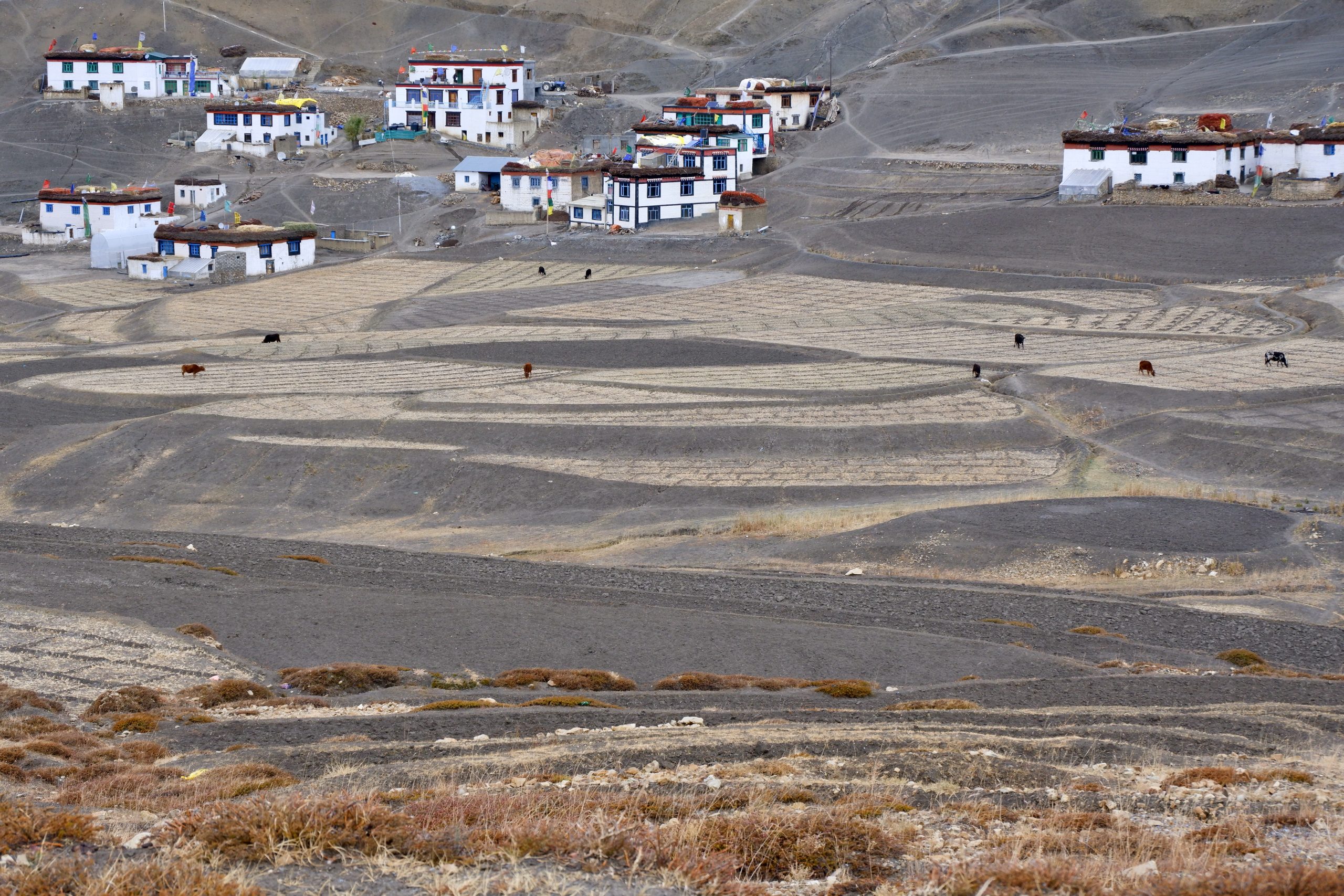 1
1
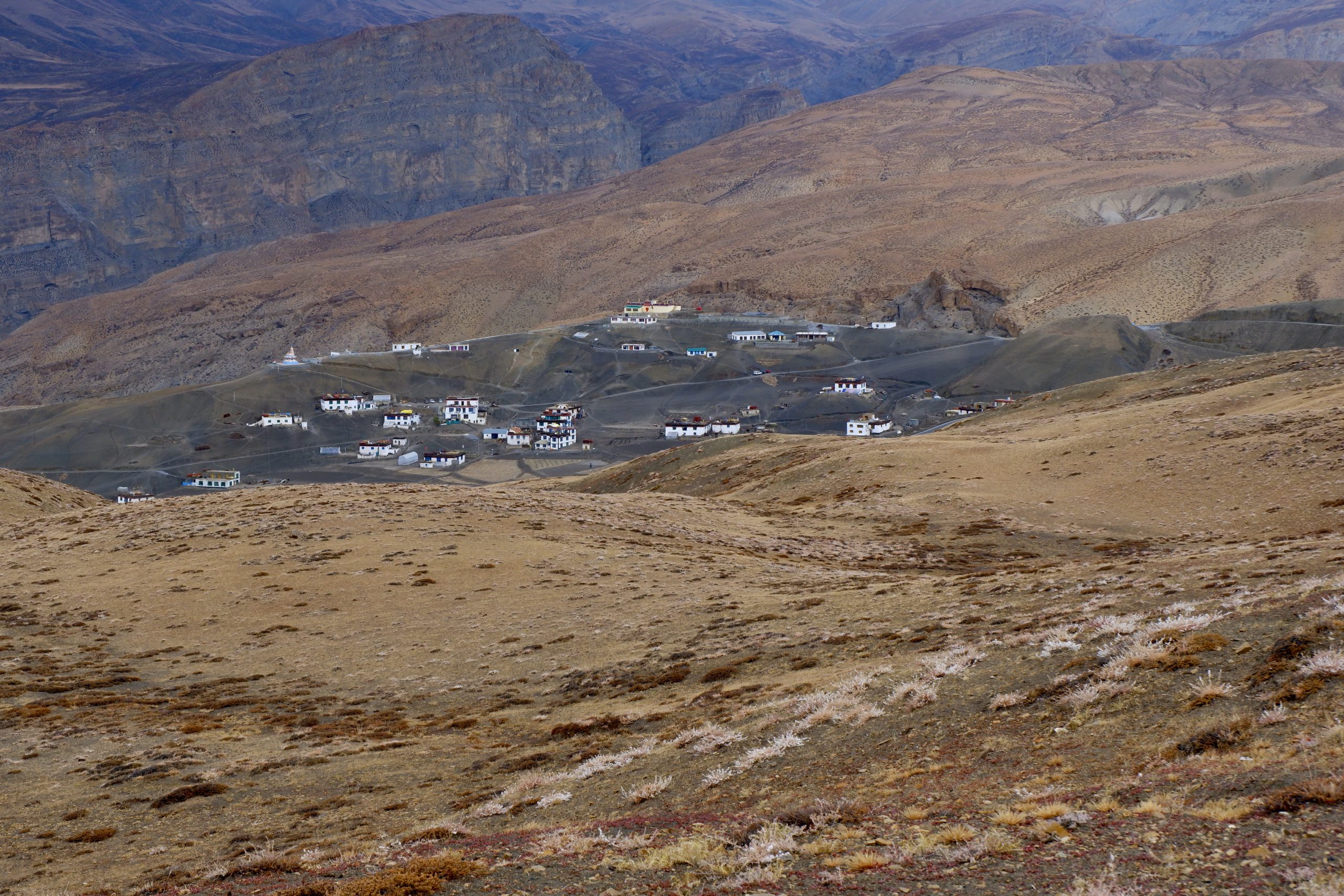 2
2
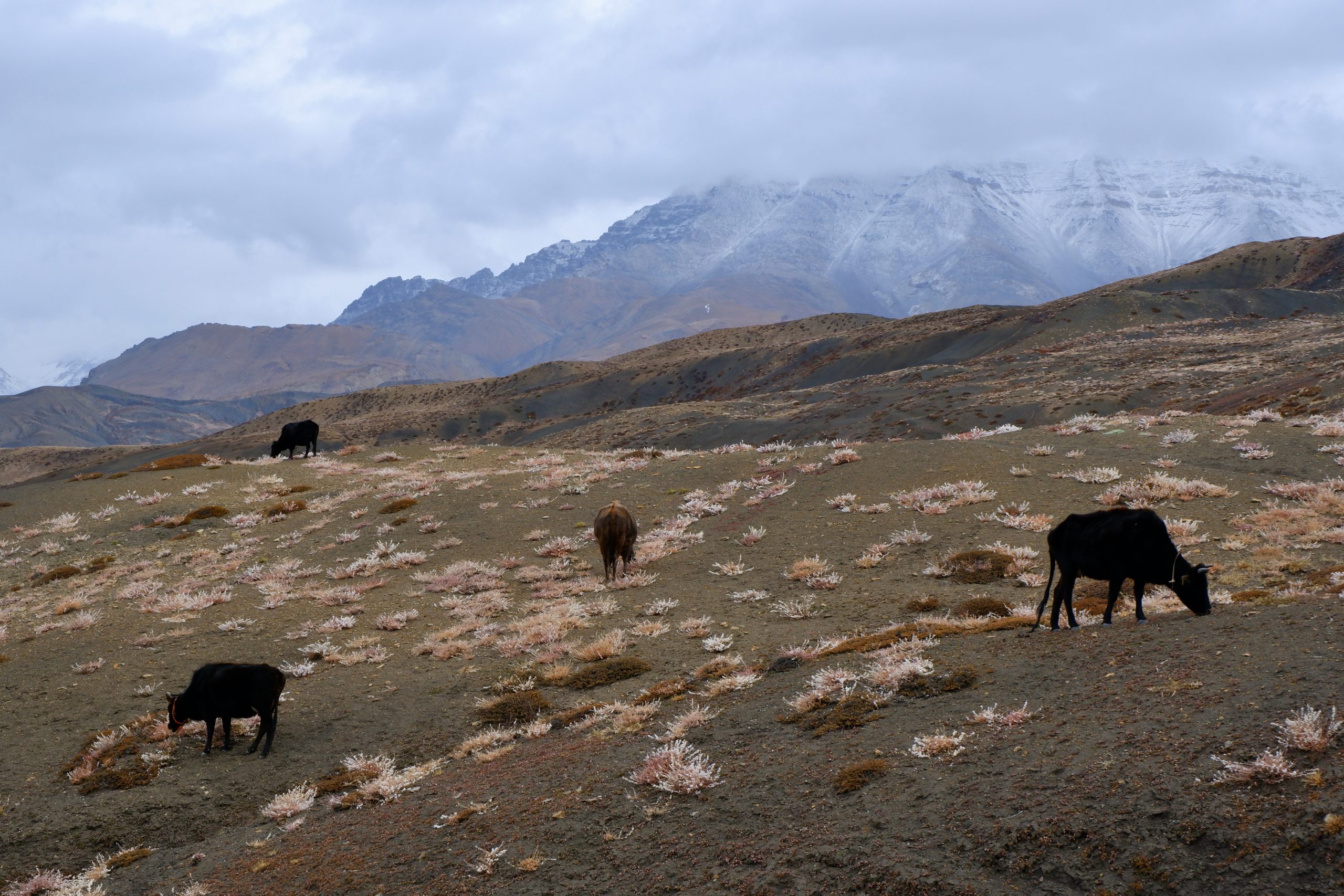 3
3
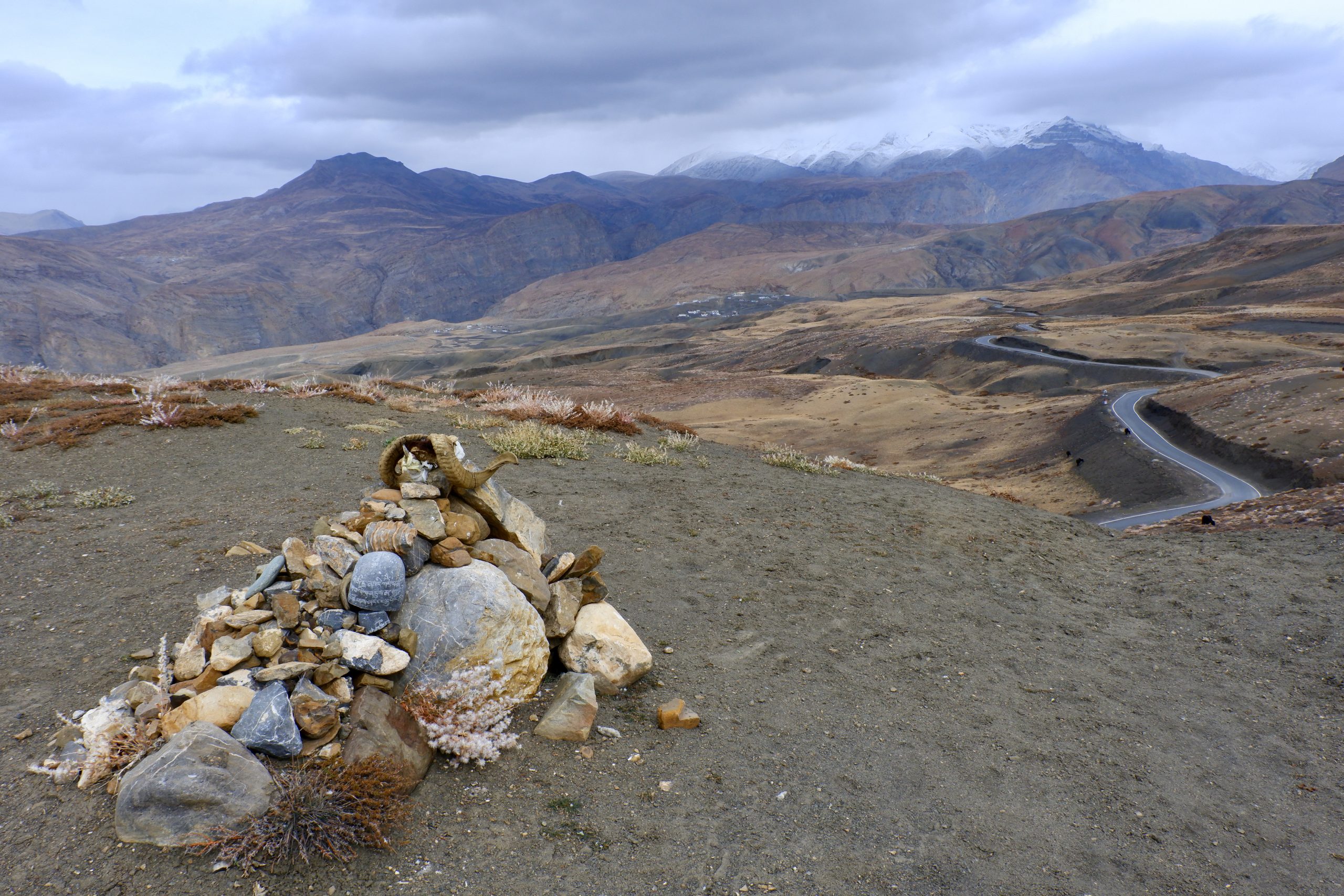 4
4
And soon I reached the first superlative destination: the village of Hikkim with the highest post office in the world at 4,400 metres. It was closed. It was Sunday. Two gentlemen rattled up on their motorbikes and immediately started a conversation. They kept their helmets on the whole time. They came from Tamil Nadu, were freezing, found it relatively expensive here and were otherwise in very good spirits.
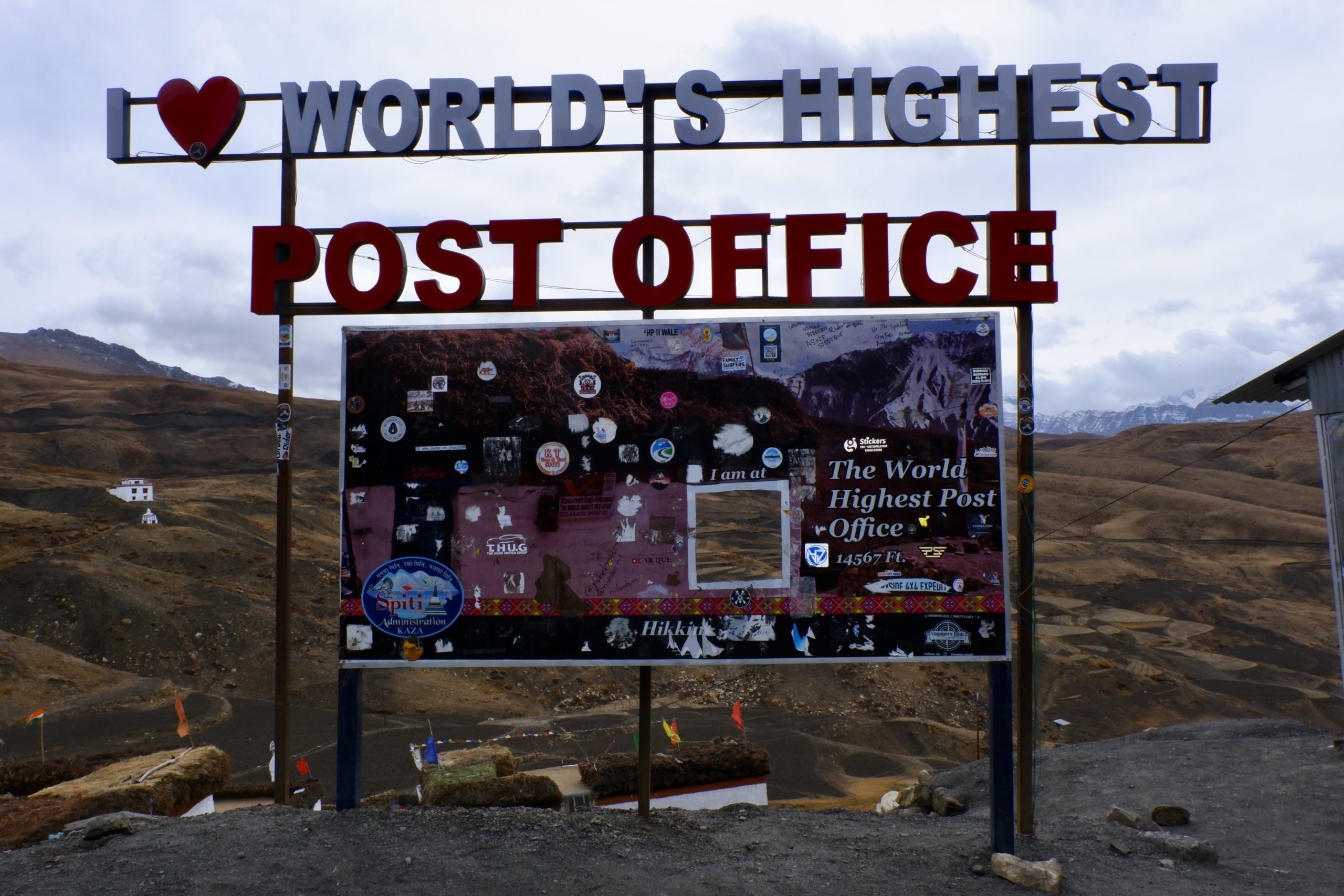 a signboard
a signboard
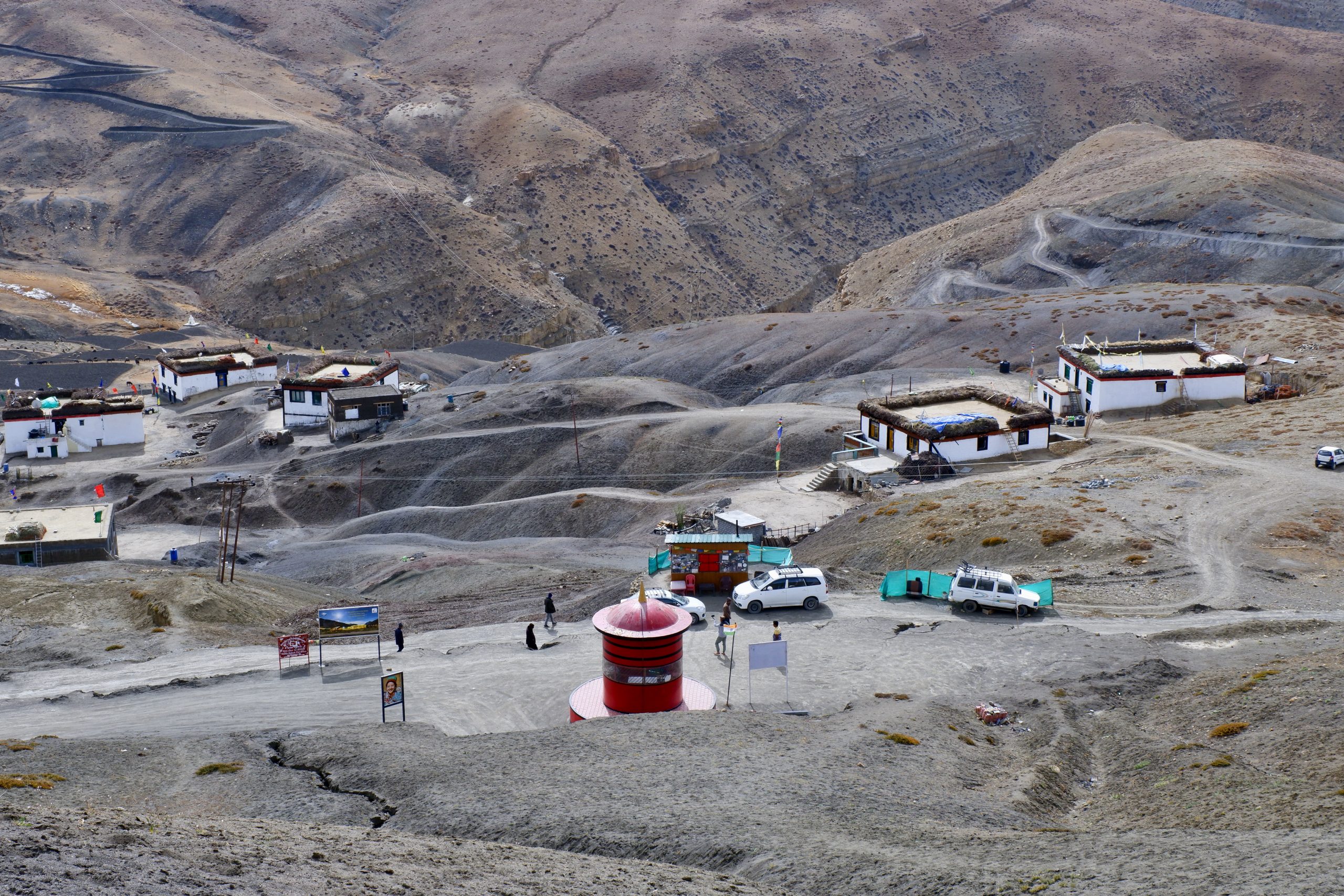 from above
from above
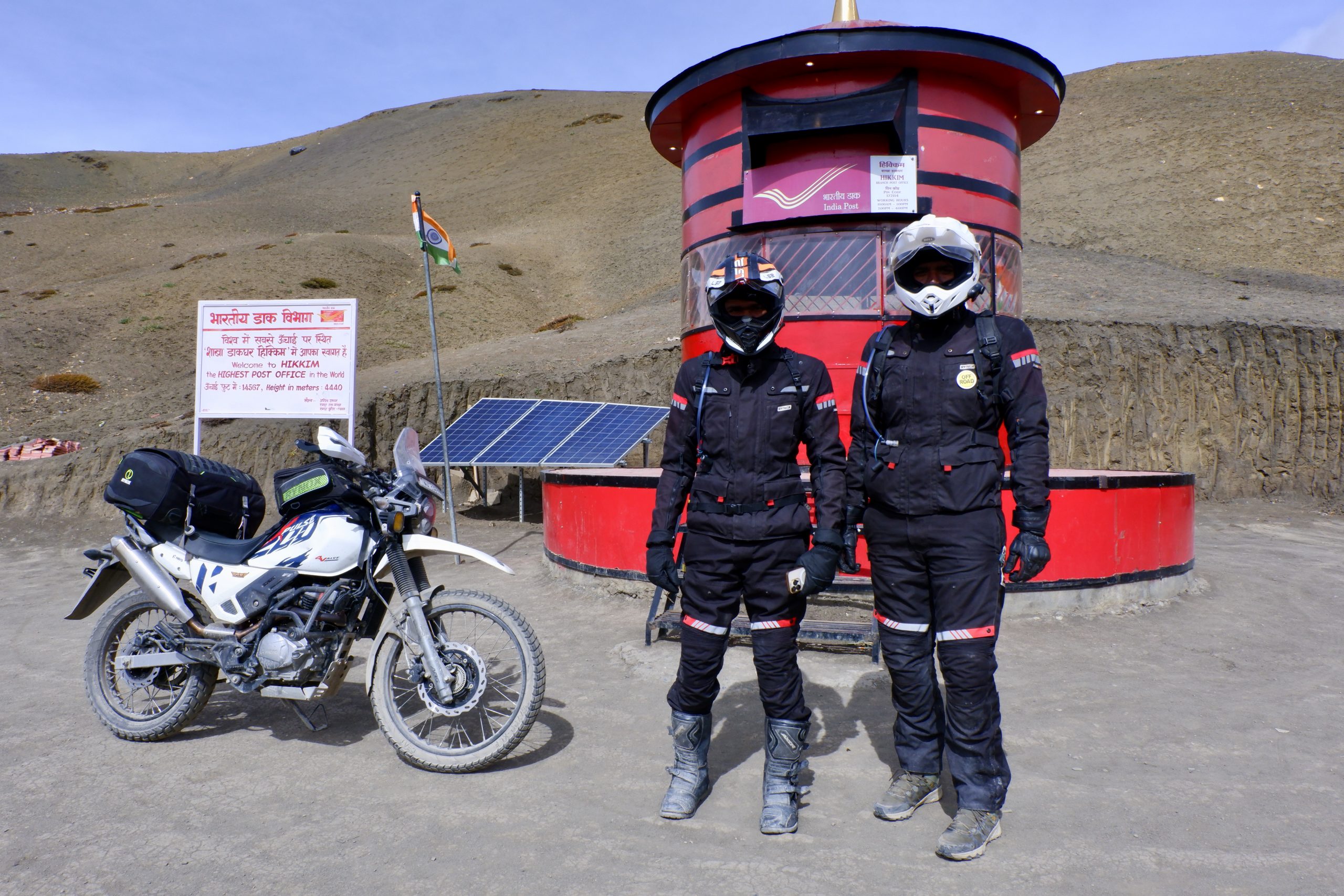 with motorbikers
with motorbikers
However, it is not so clear with this superlative – as I have found this article.
But Hikkim was also such a nice looking village and I continued to hike and photograph. And when it was noon, I was lucky that the sky had opened up a bit. I could have a proper sit-down break and take more pictures:
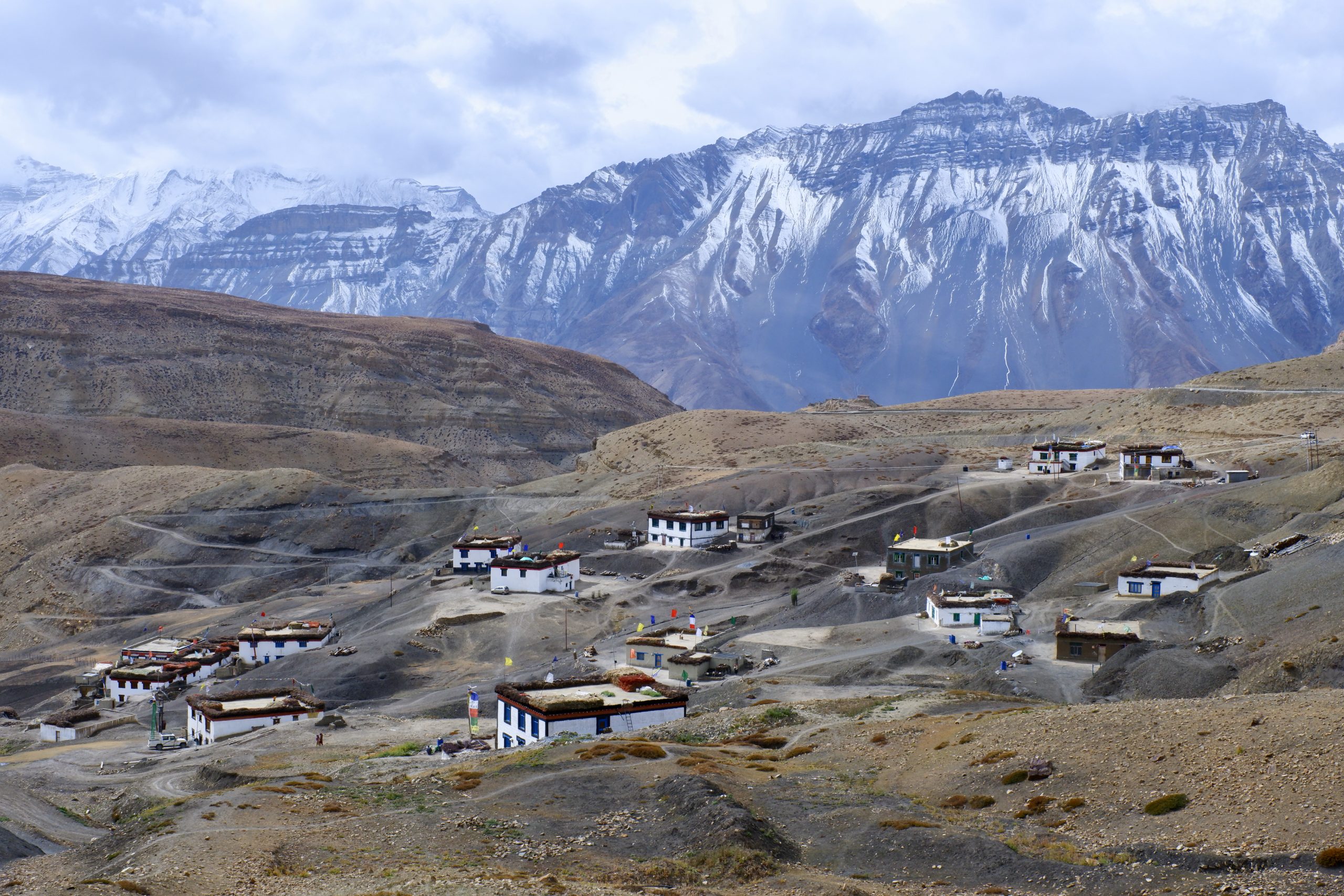 1
1
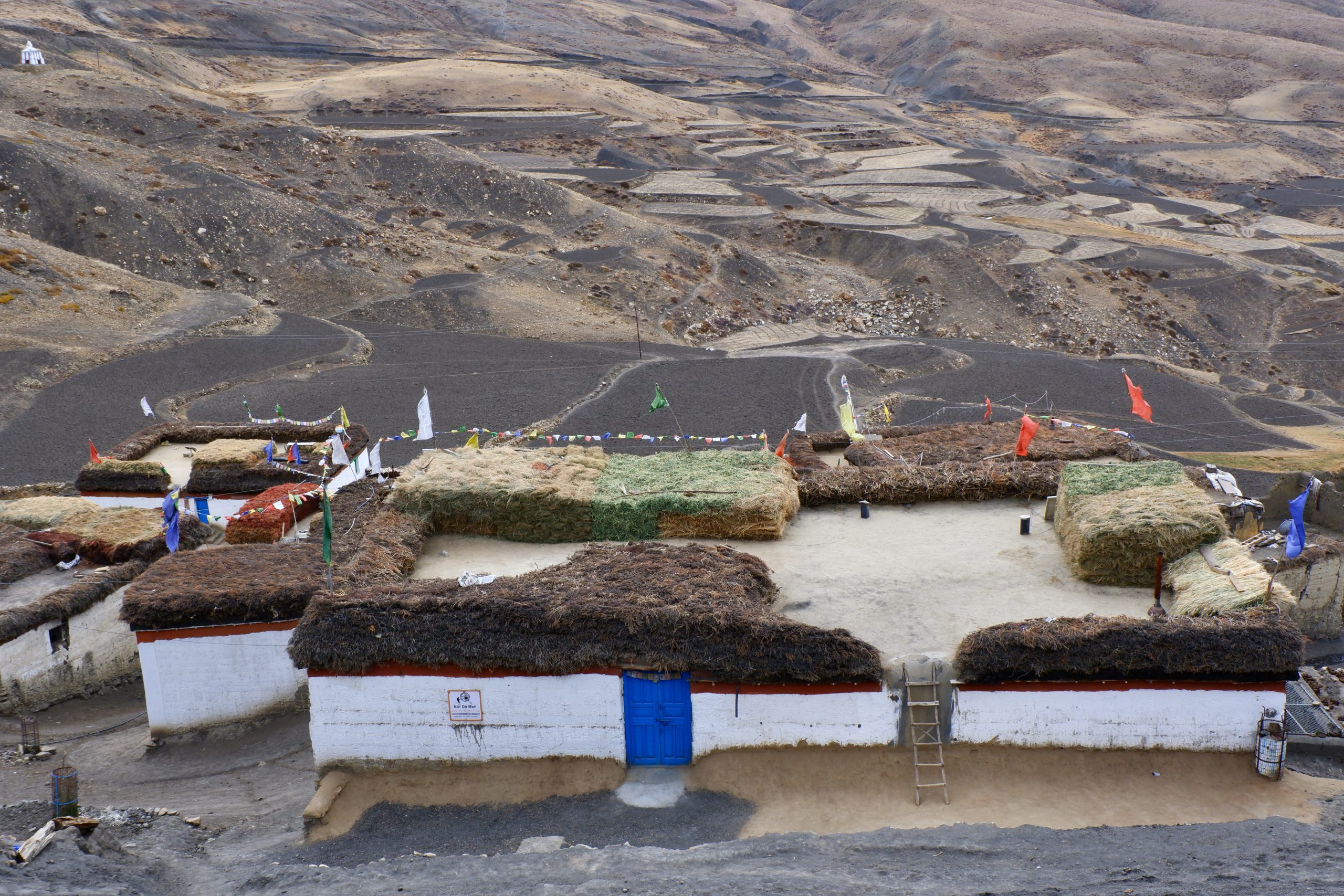 2
2
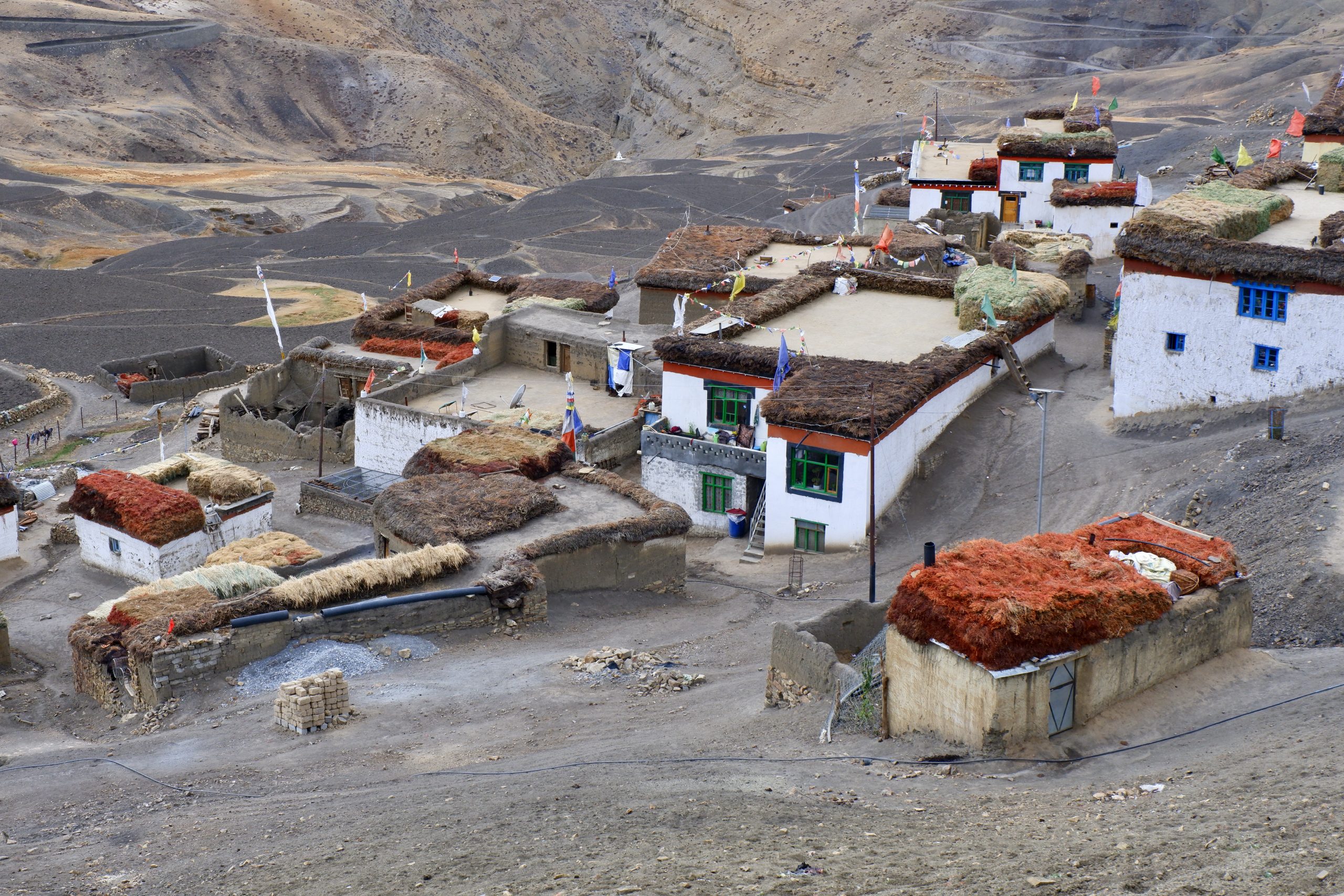 3
3
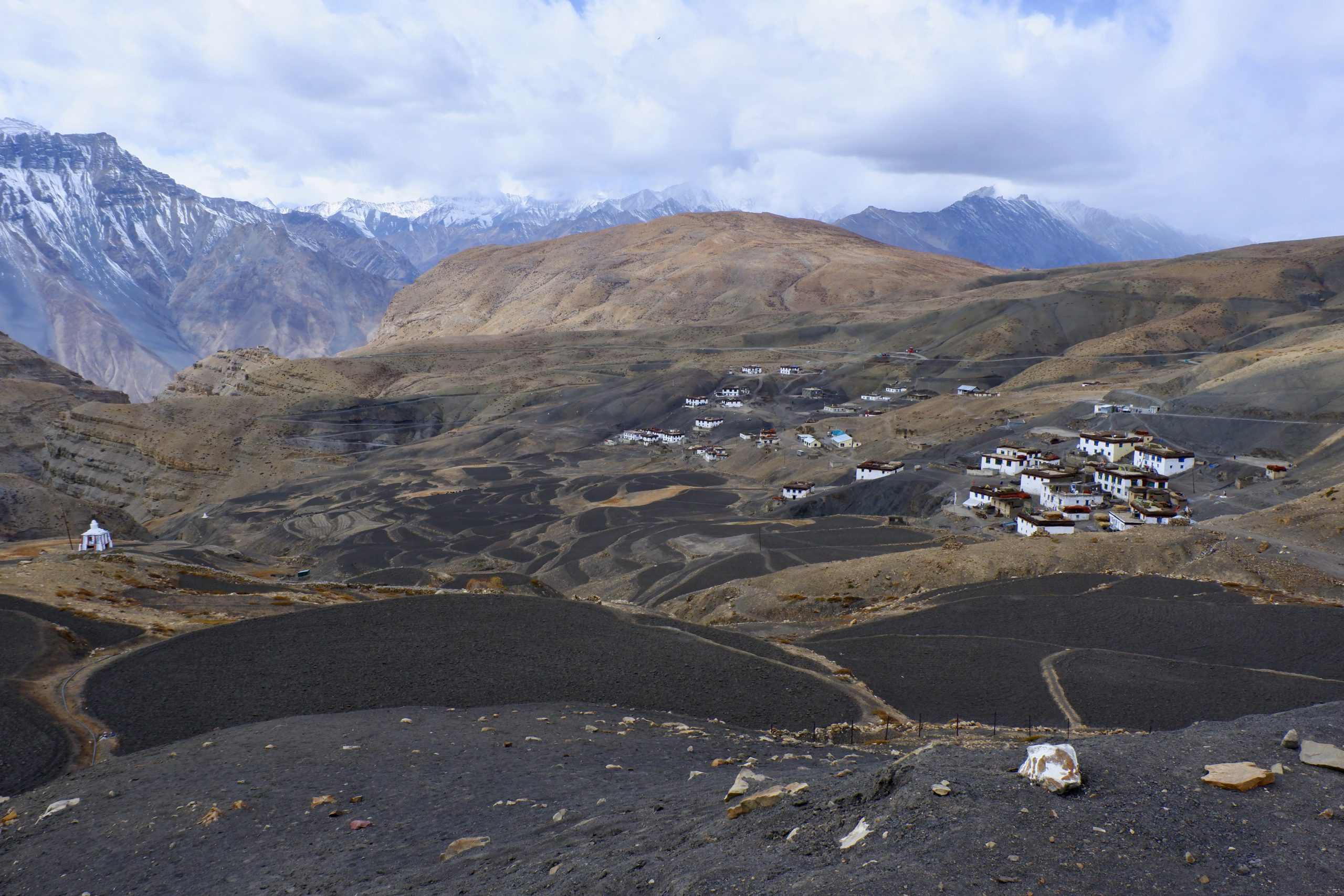 4
4
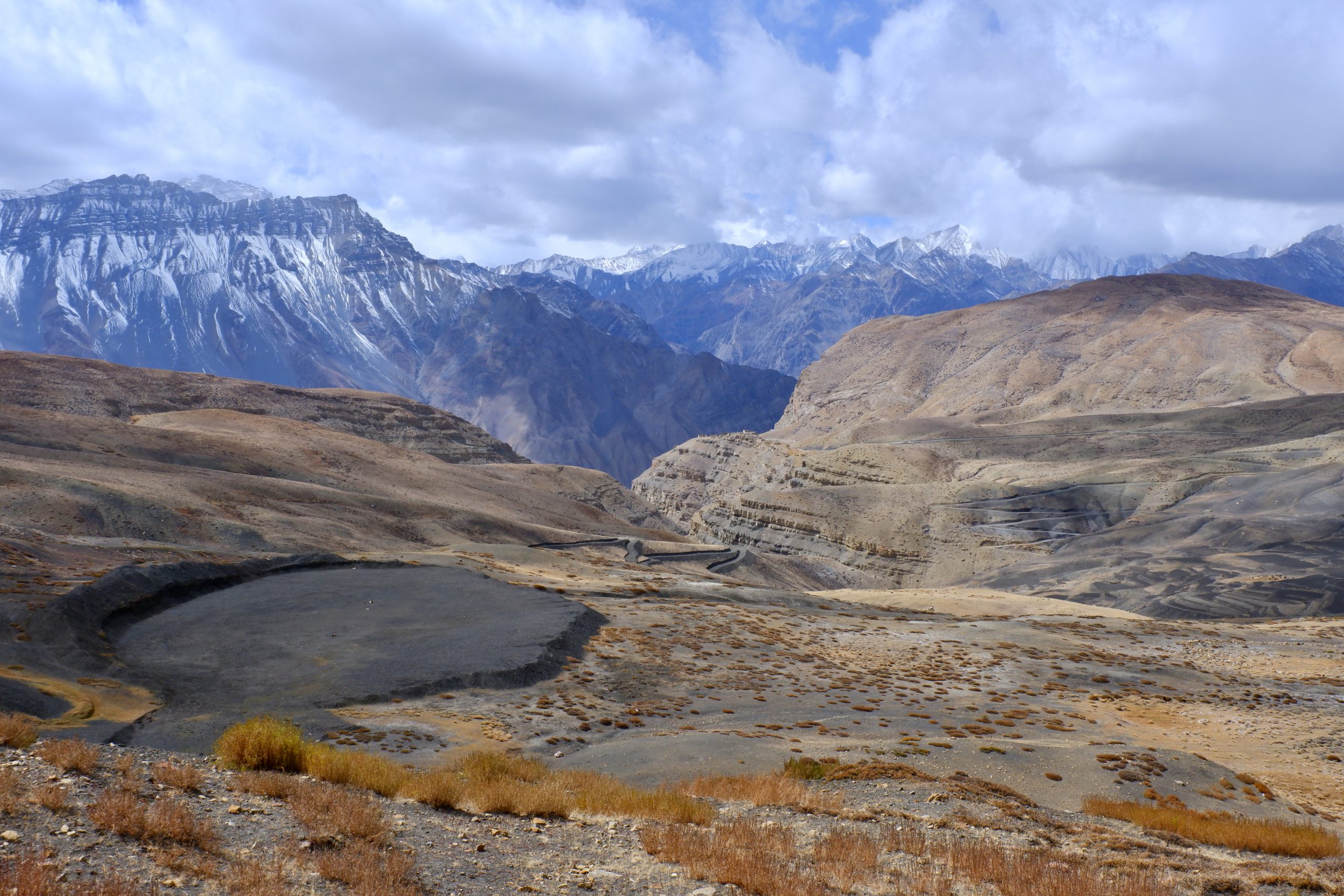 5
5
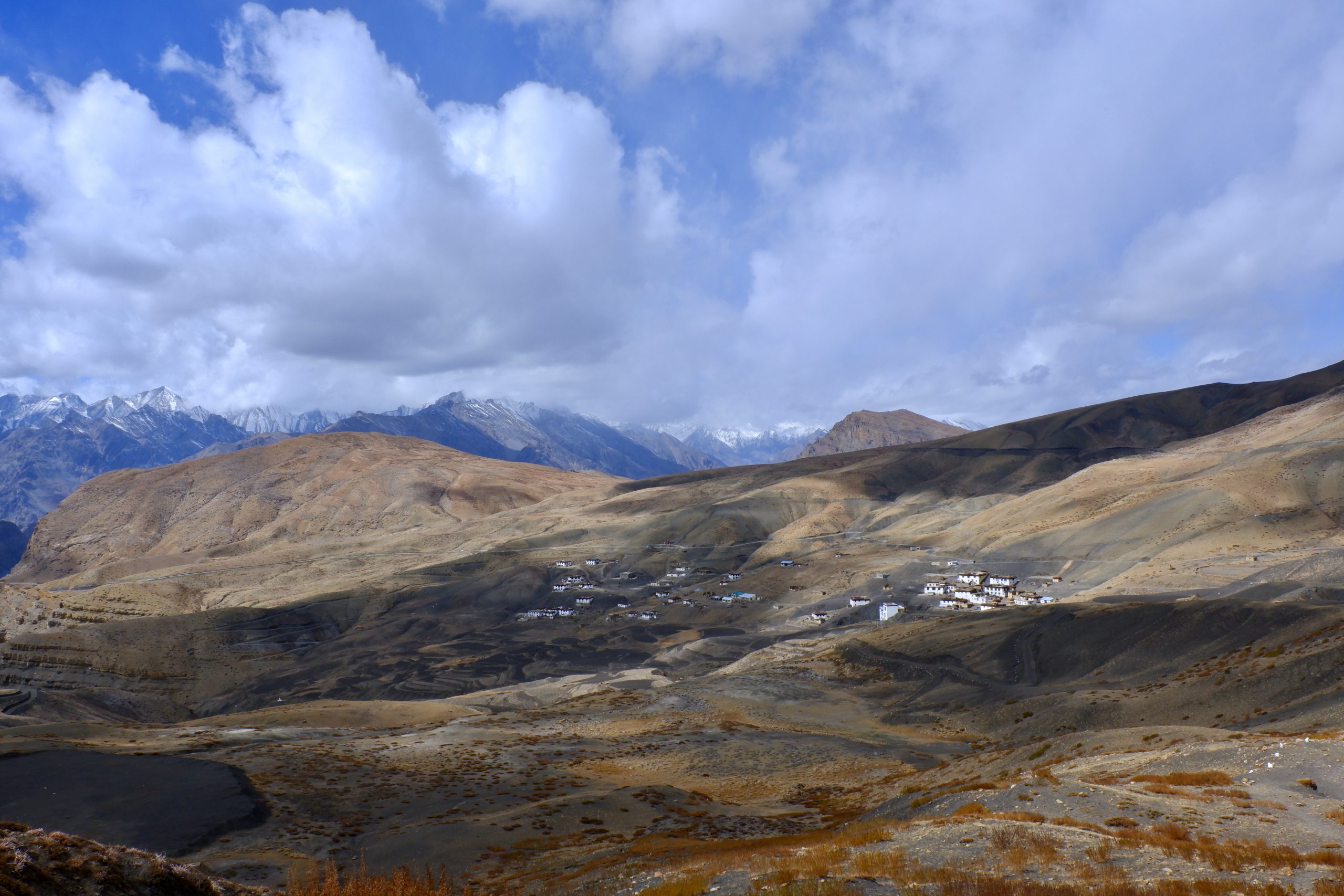 6
6
And then it wasn’t long before the next highest point was reached: a restaurant at 4,587 metres. But here I already have my own doubts, or at what point is a restaurant a restaurant? Does it have to have a long menu or are tea and Maggi 2-minute noodles enough? Then it’s even higher on Khardong-la above 5,300 m in Ladakh. I only had tea there. There were not many customers. Apart from me, there were 3 Indians, all smoking and ordering food. Little fun-fact: these Indians and also the motorbikers approached me first in hindi.
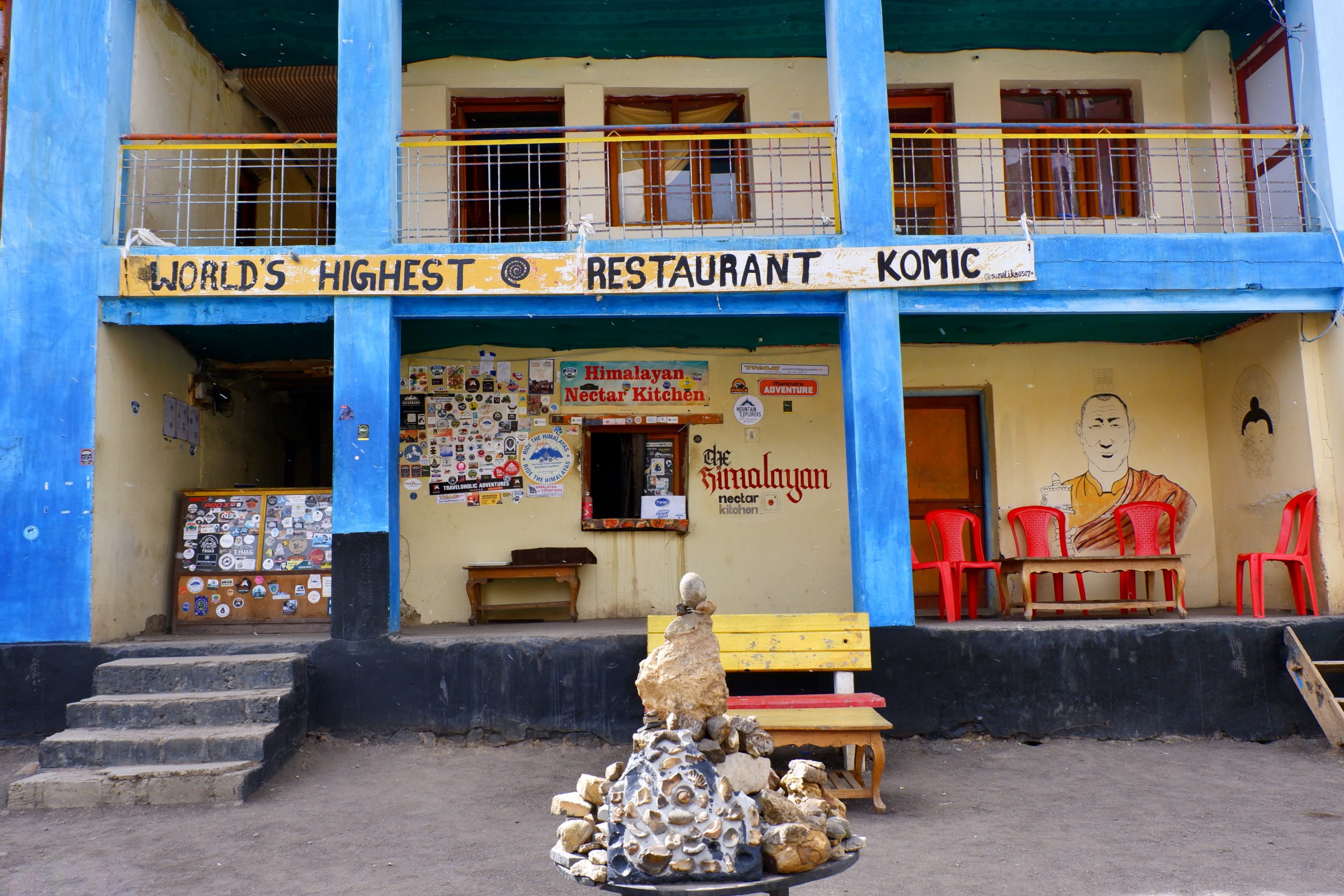 Restaurant
Restaurant
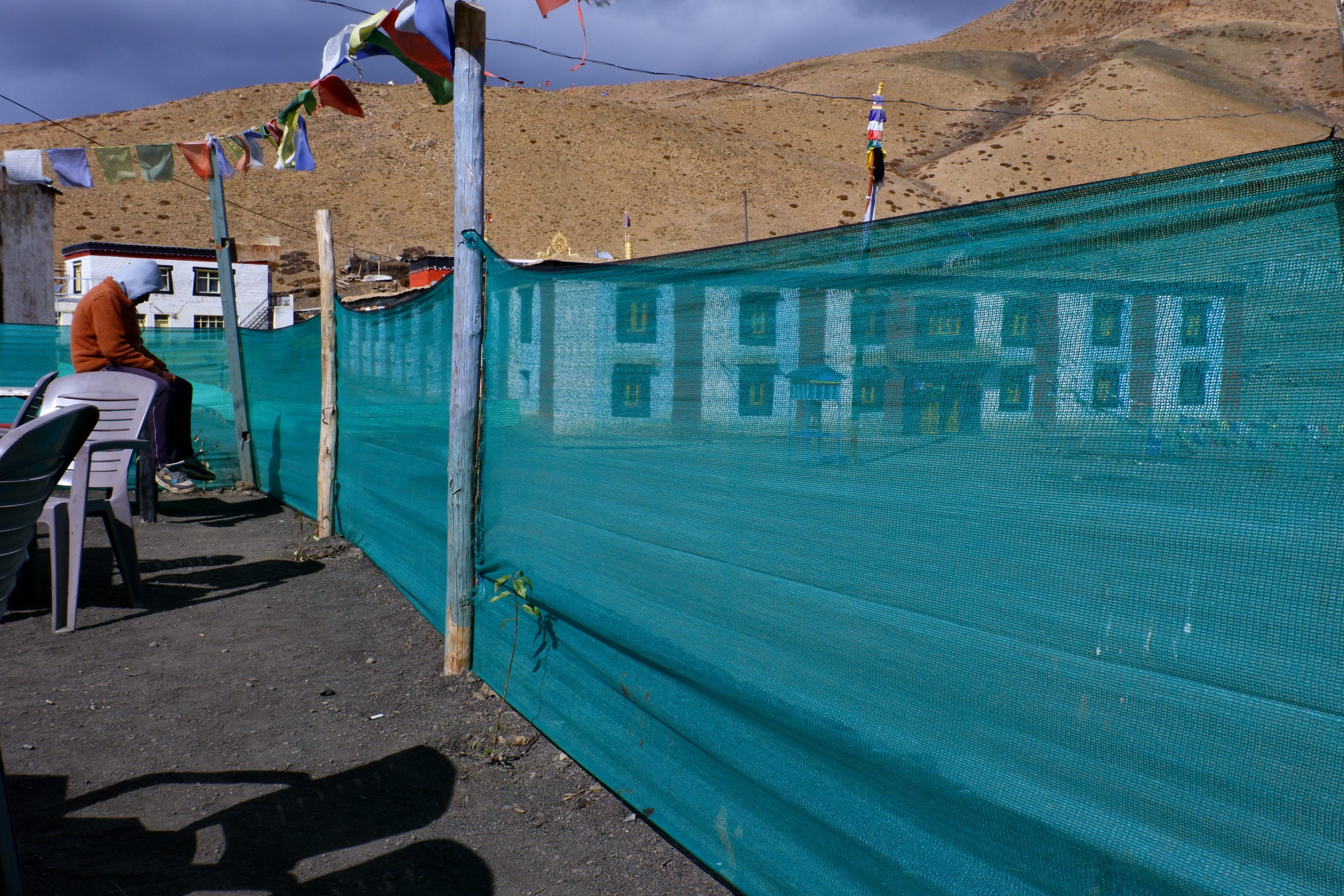 bored waiter
bored waiter
Up here there was also a monastery to visit, or rather the new and the old building. The new one was red and was prominently located at the end of the hill. Inside, however, it was still under construction. There was a room of the wrathful deities that no one was allowed to enter. And a room with a few statues, which was still fully unfinished.
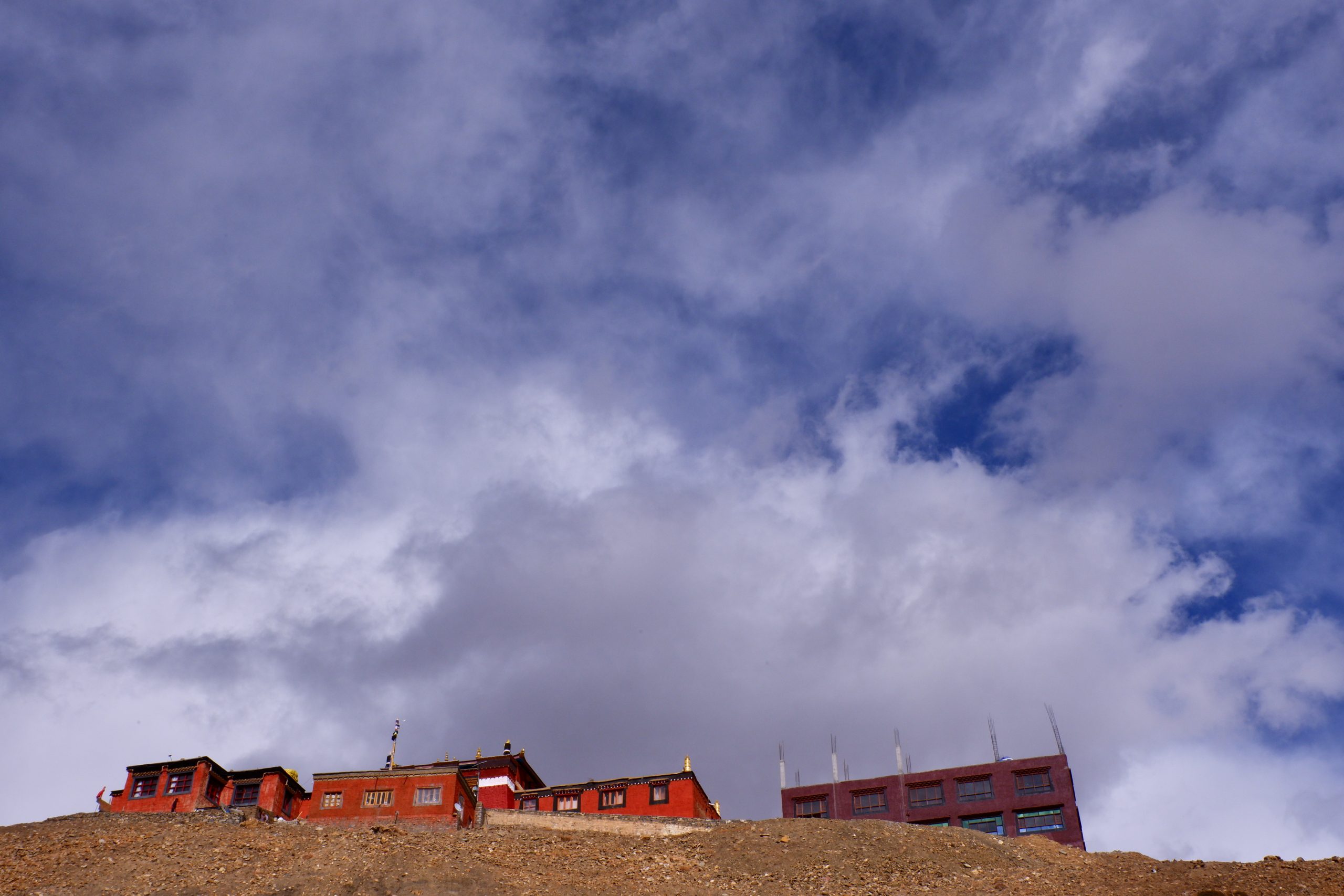 new monastery
new monastery
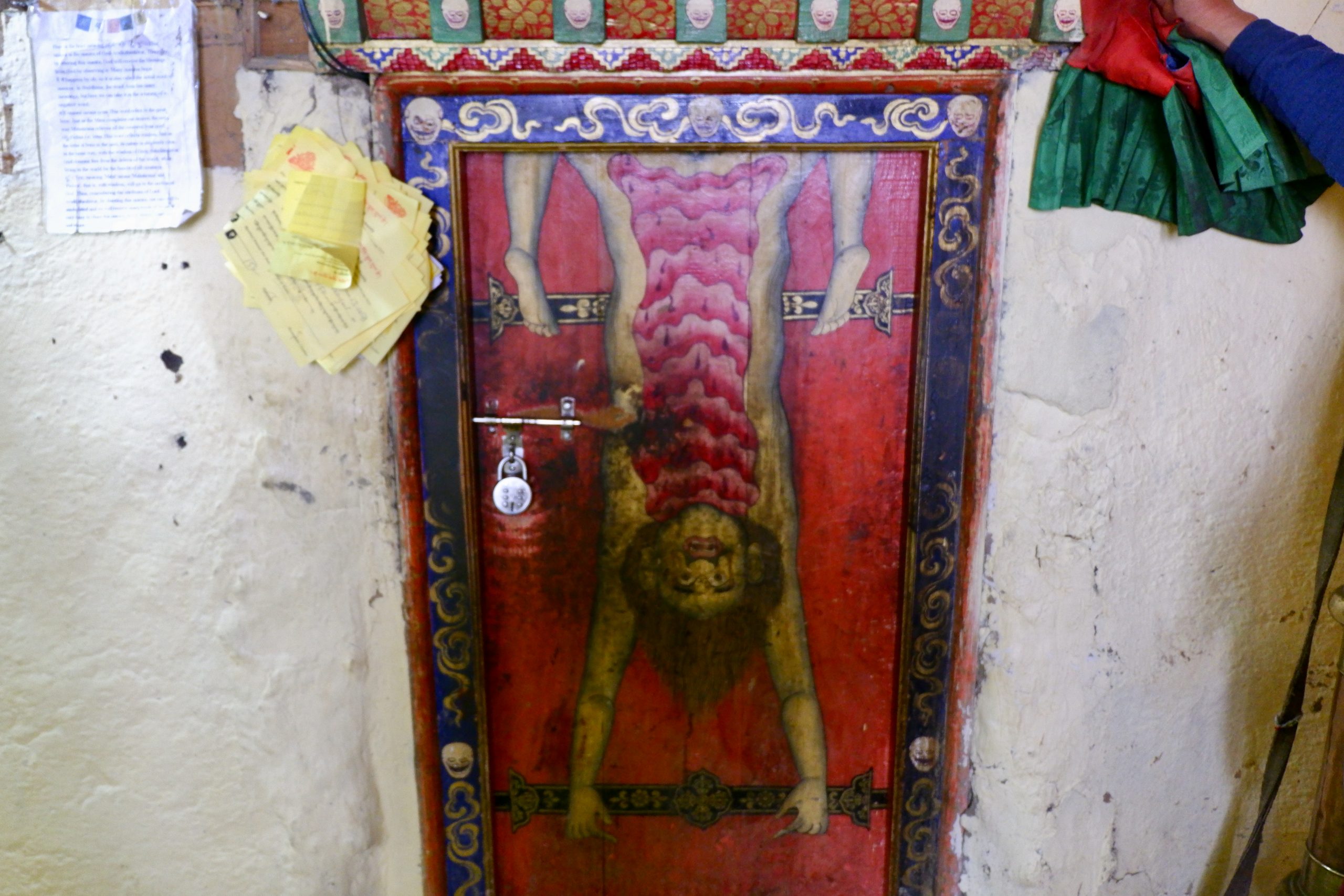 door to the room of the wrathful deities
door to the room of the wrathful deities
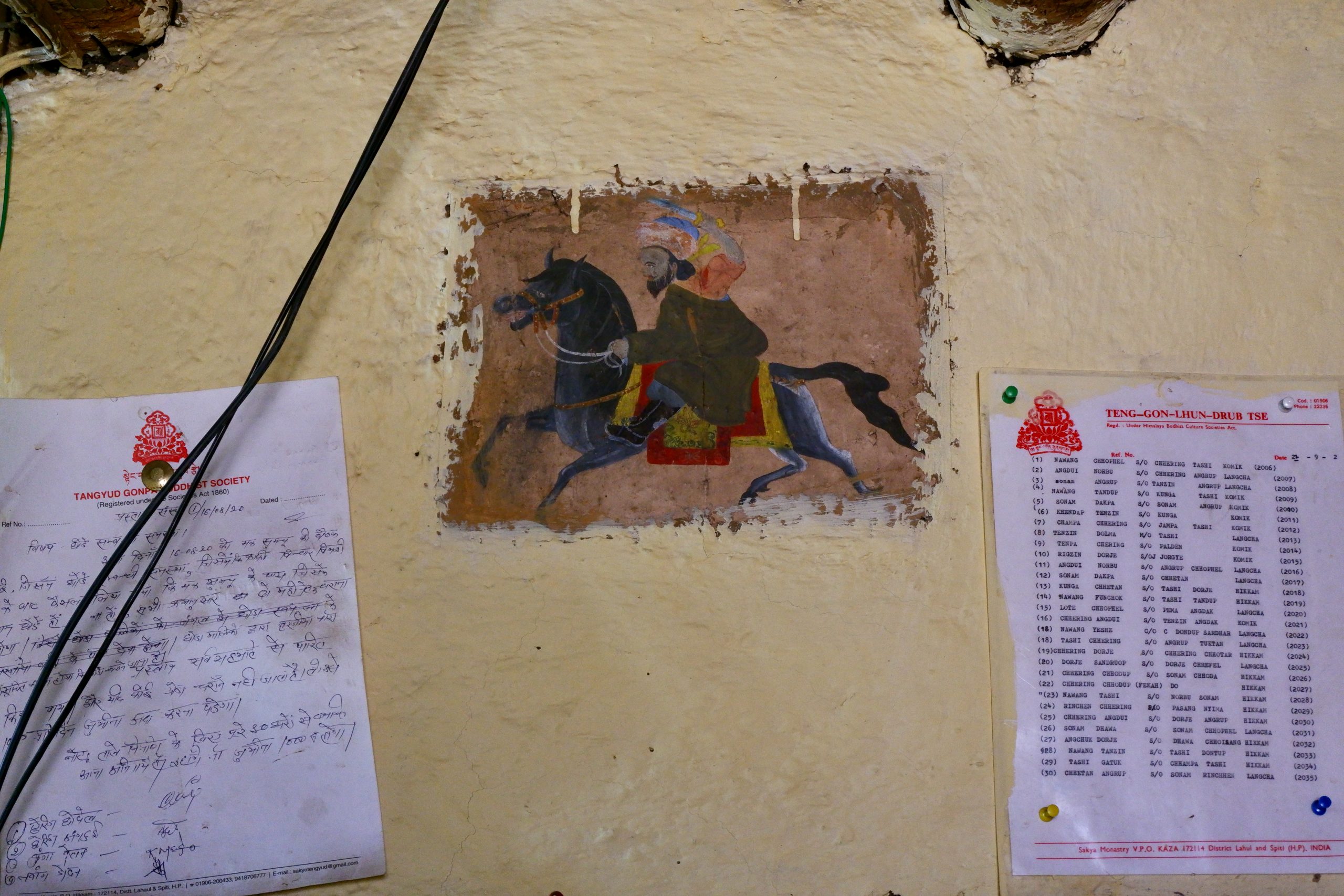 above a picture of Dschingis Khan
above a picture of Dschingis Khan
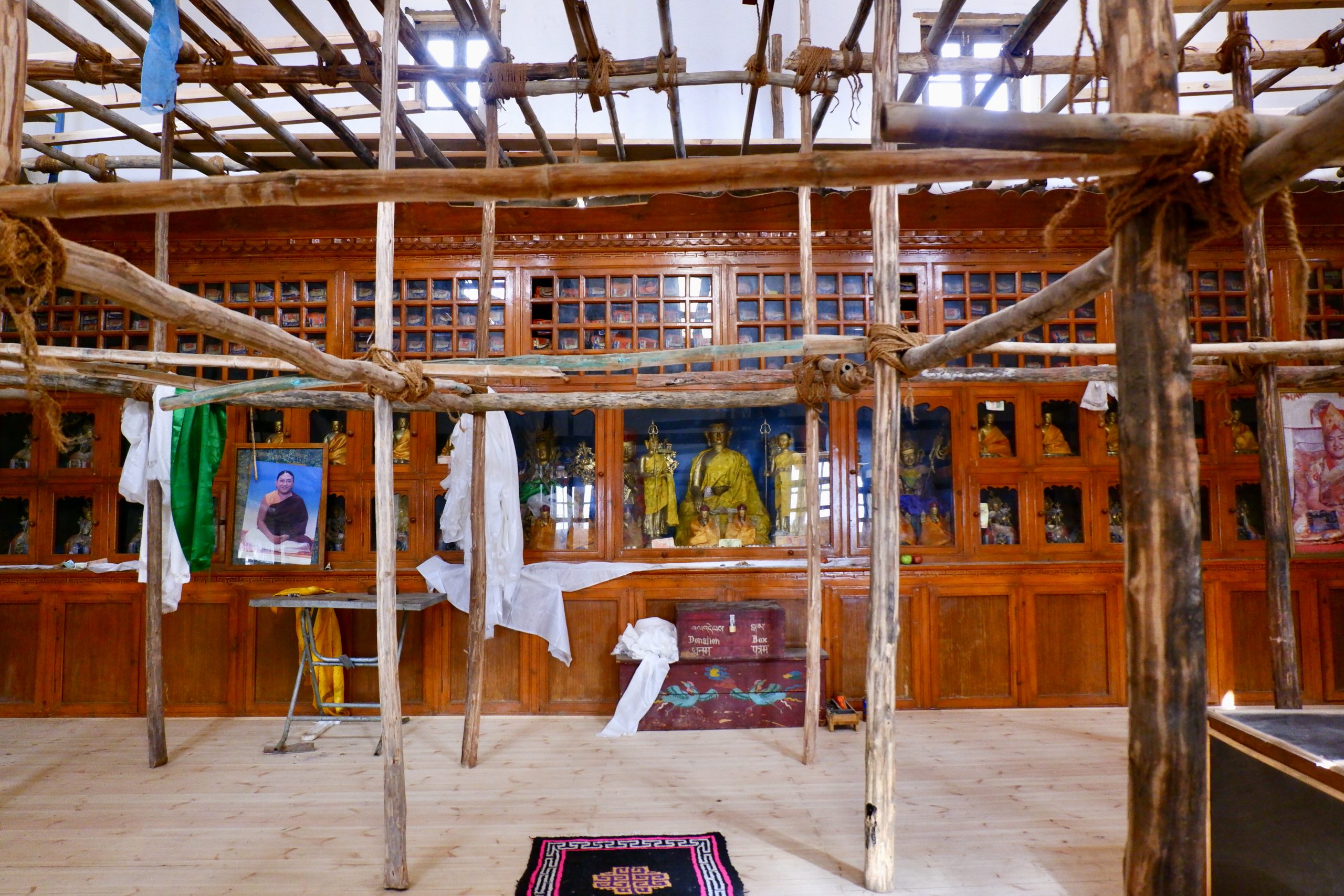 new hall
new hall
There was also the old monastery, but I found no one there who wanted to show me the rooms.
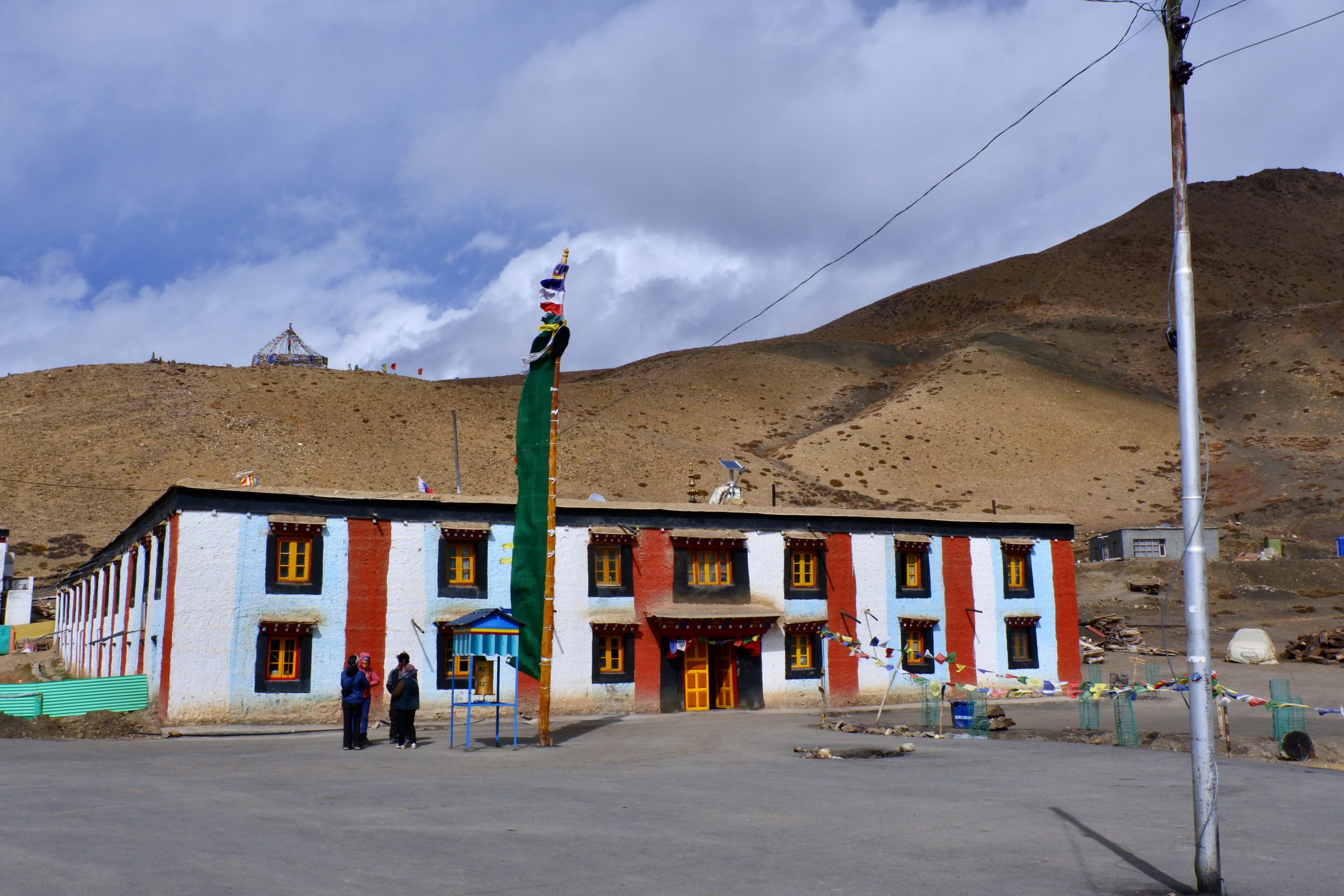 old monastery
old monastery
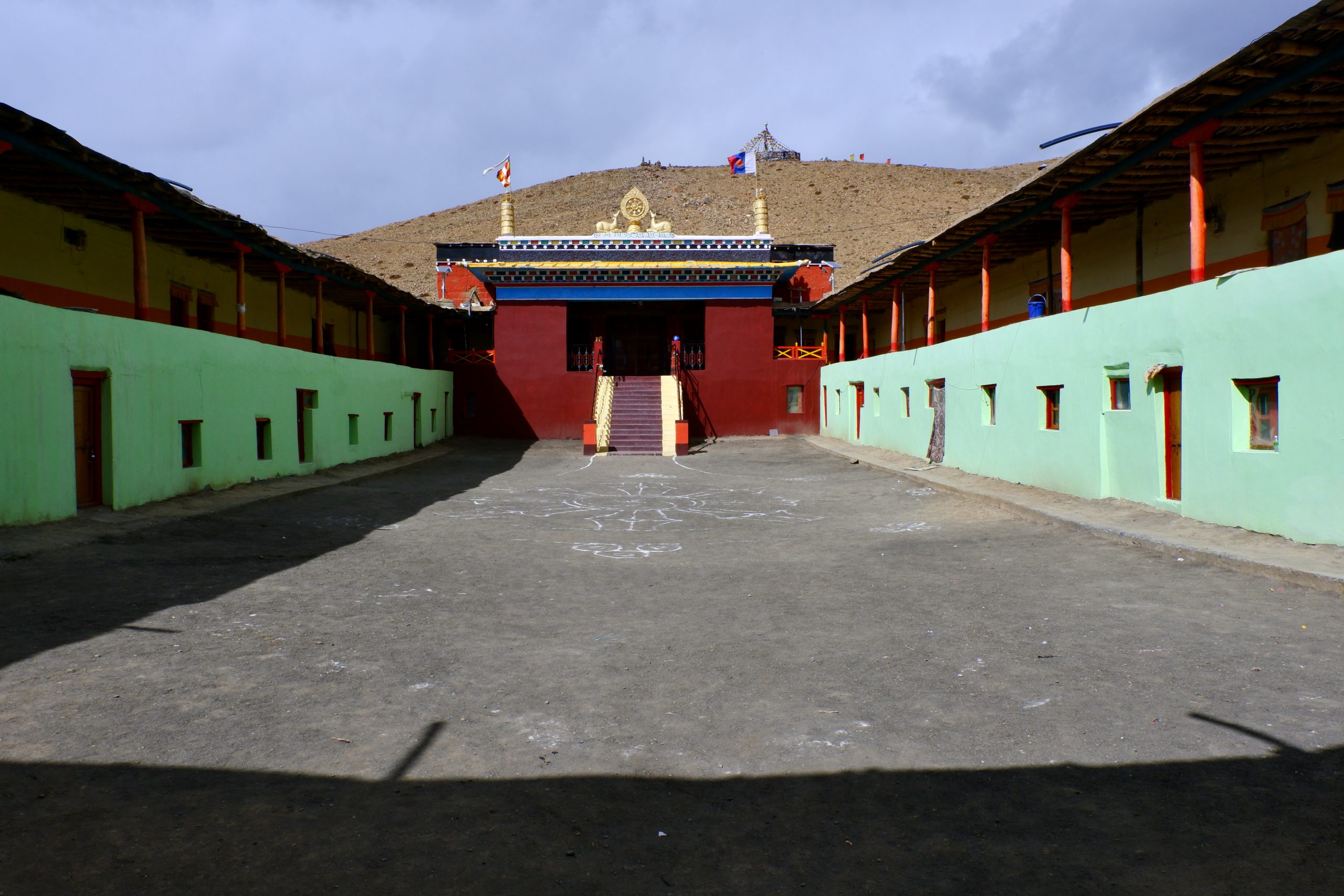 courtyard
courtyard
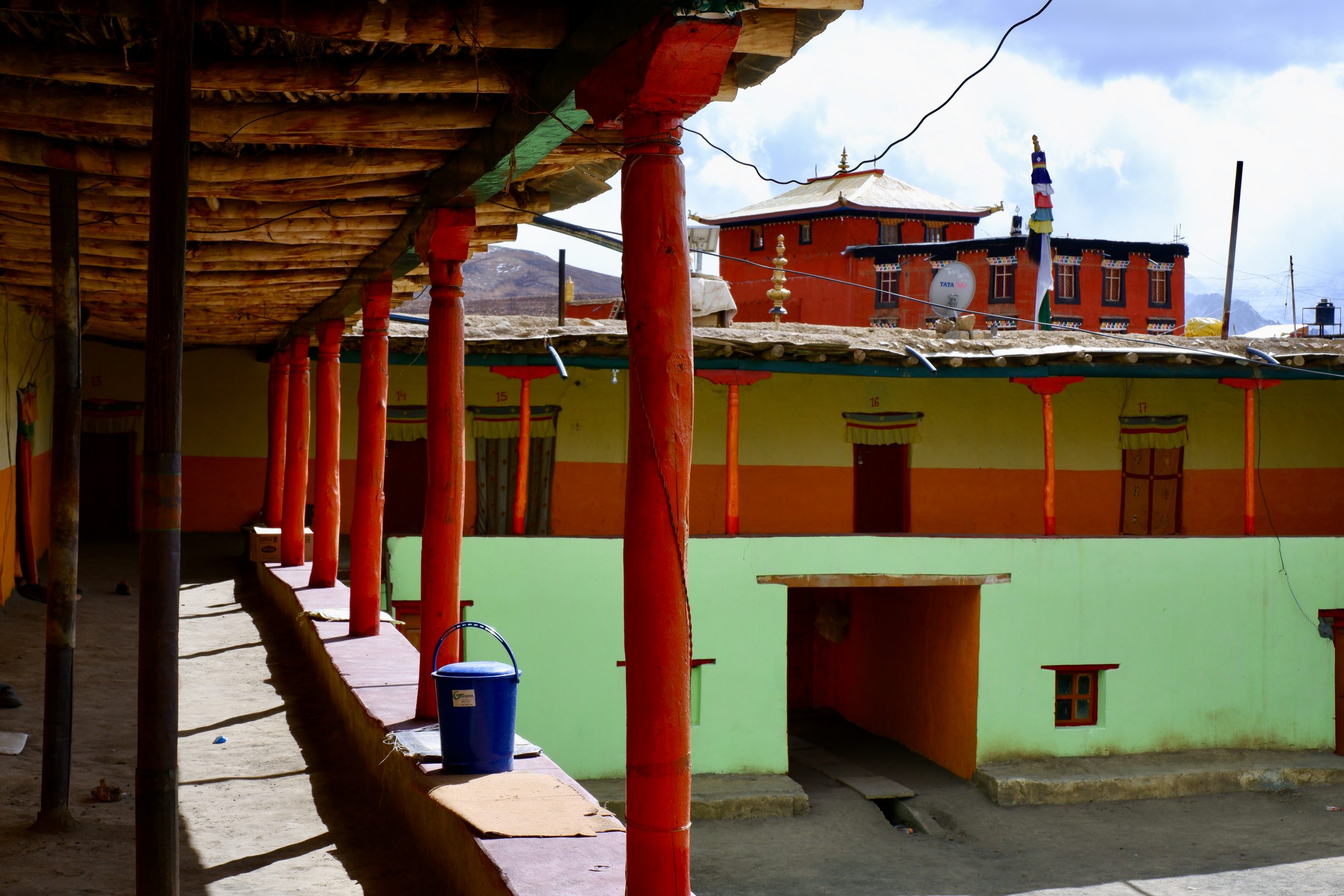 view to new monastery
view to new monastery
The village next door, Komic, is the third superlative. It is considered the highest village with motorable road access. By which is meant that there is a properly tarred road leading there. Otherwise: what is a motorable road? Korzok at Lake Tsomoriri is even higher, at 4,590 m, and there is also a road leading to it. But it is not so well tarred.
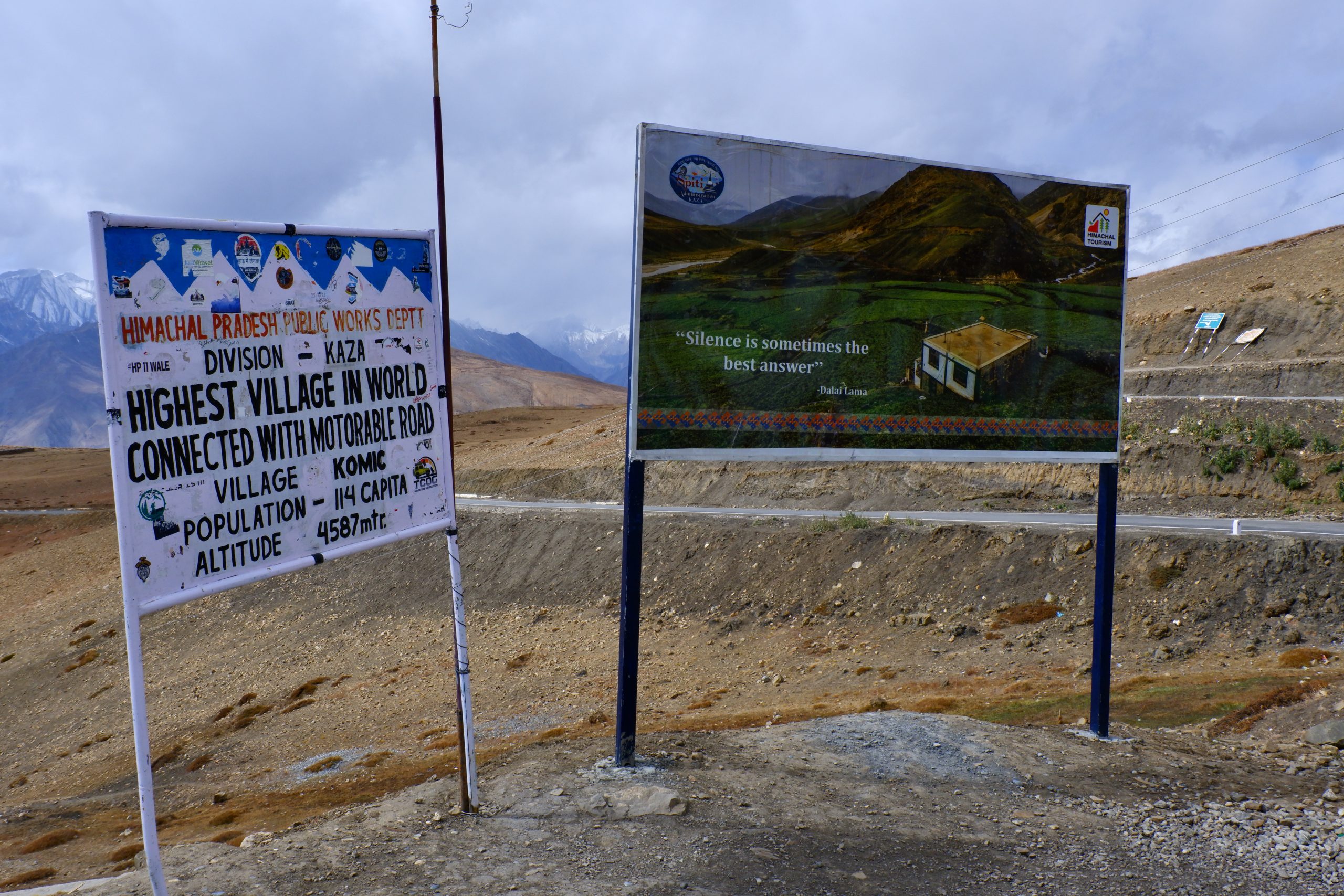 signboard
signboard
What I find most amazing is how much farming is still possible here. Many small fields lay below and next to the 13 houses. They had all been harvested. Now people were busy filling the leftovers from the stables into sacks and transporting them to the field by donkey. Then small piles were spread out on the fields, and others heaped them with normal earth. I walked around everywhere, looking here and there, and because the light was getting even better, I eagerly snapped around. Here are some of the pictures:
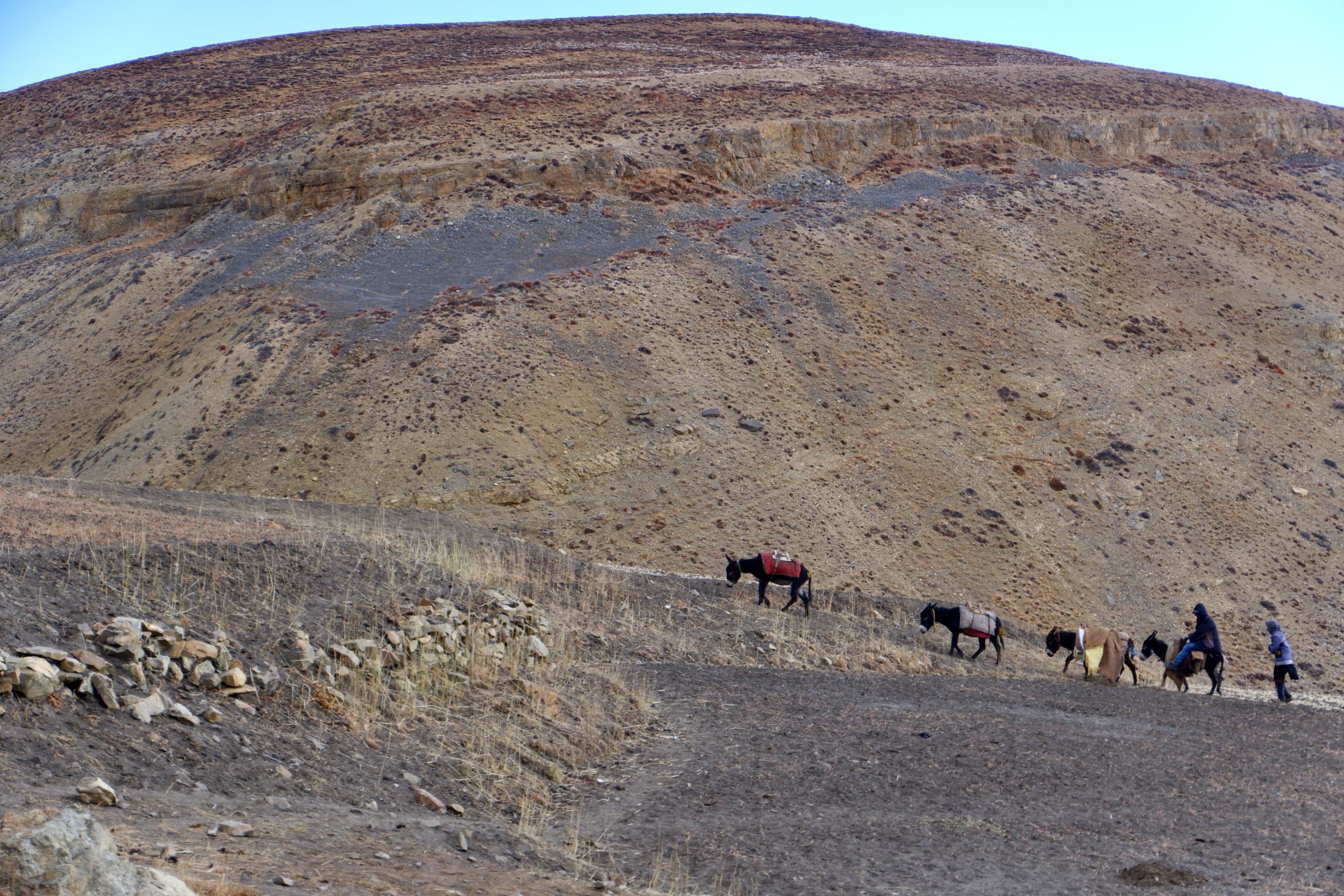 1
1
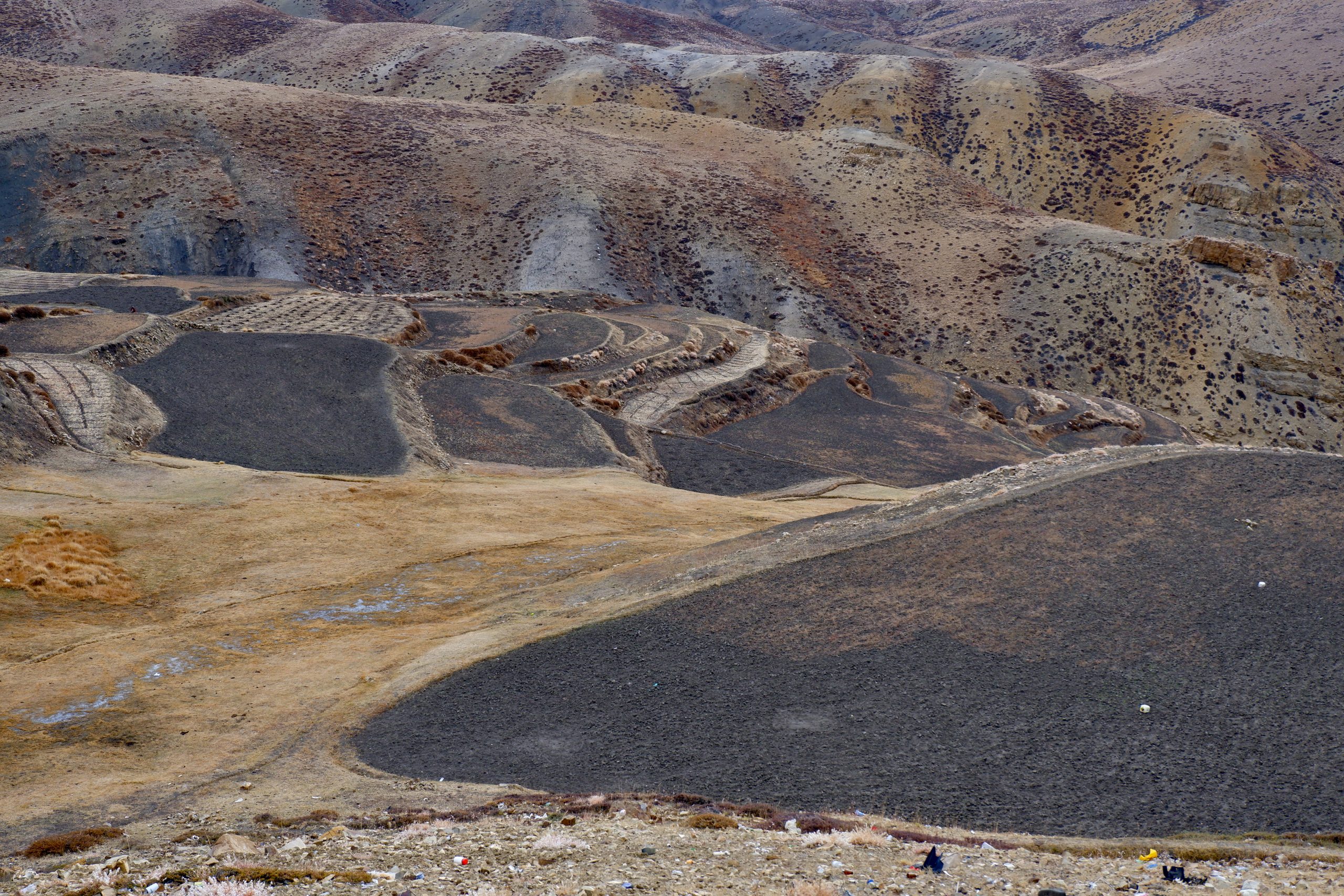 2
2
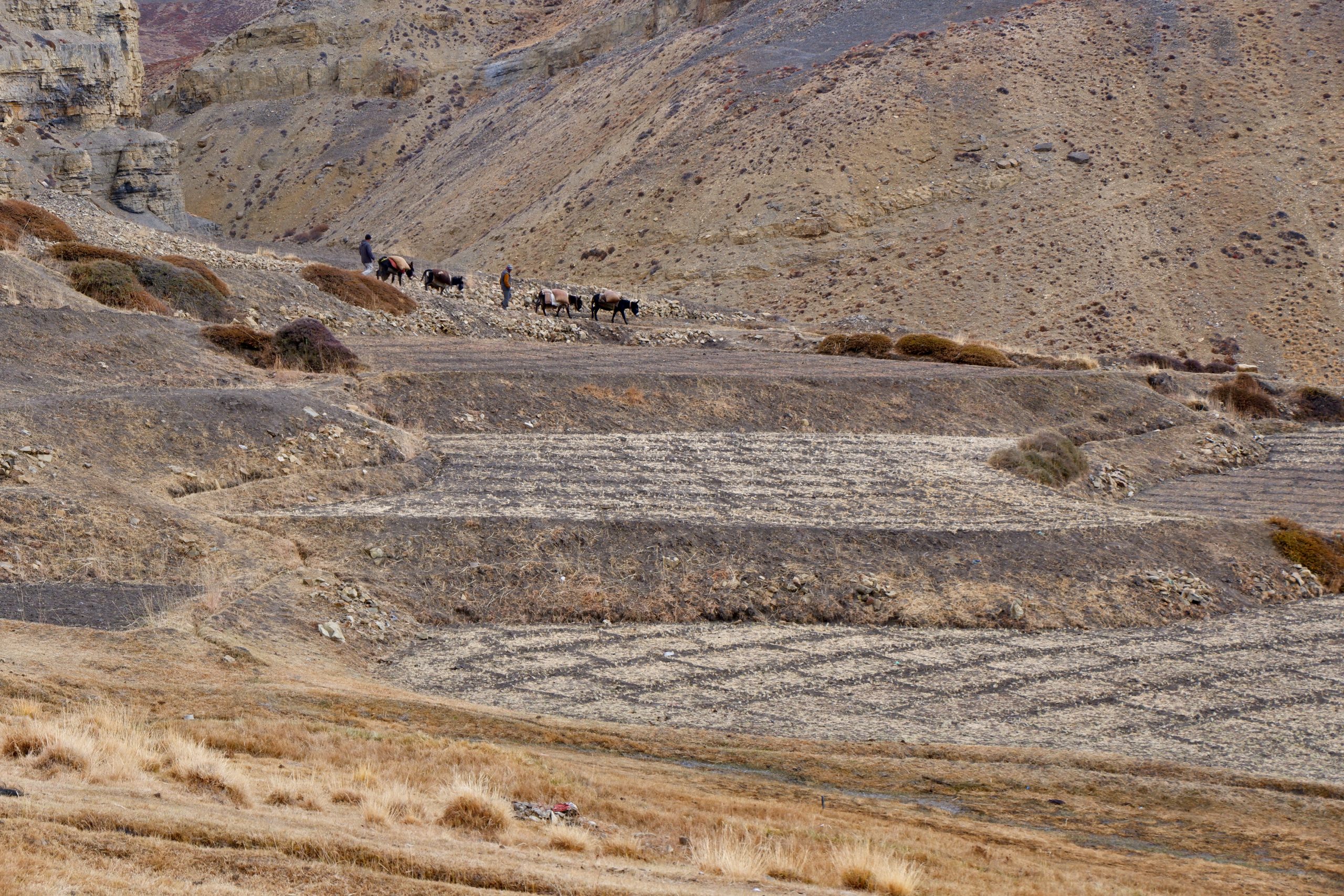 3
3
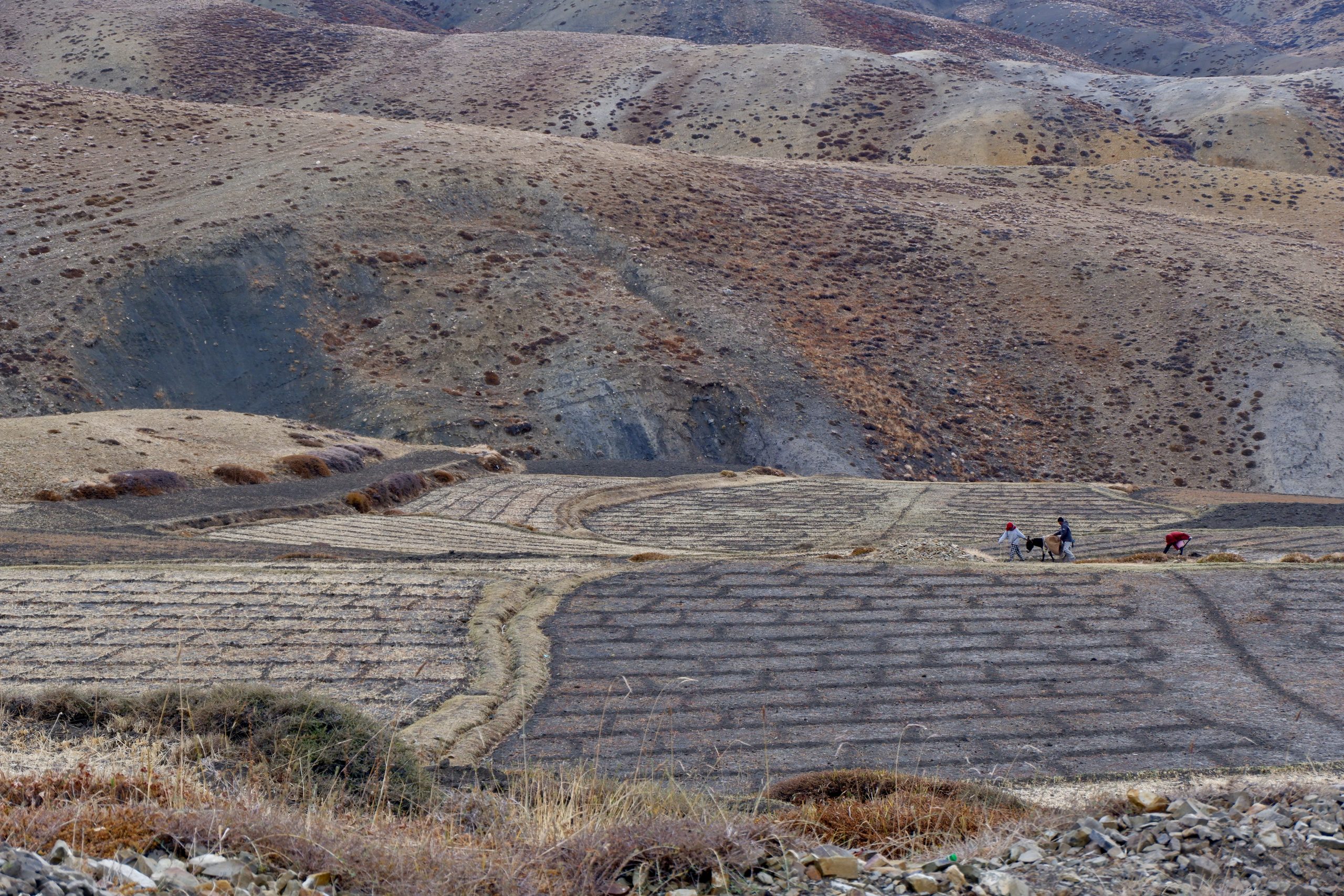 4
4
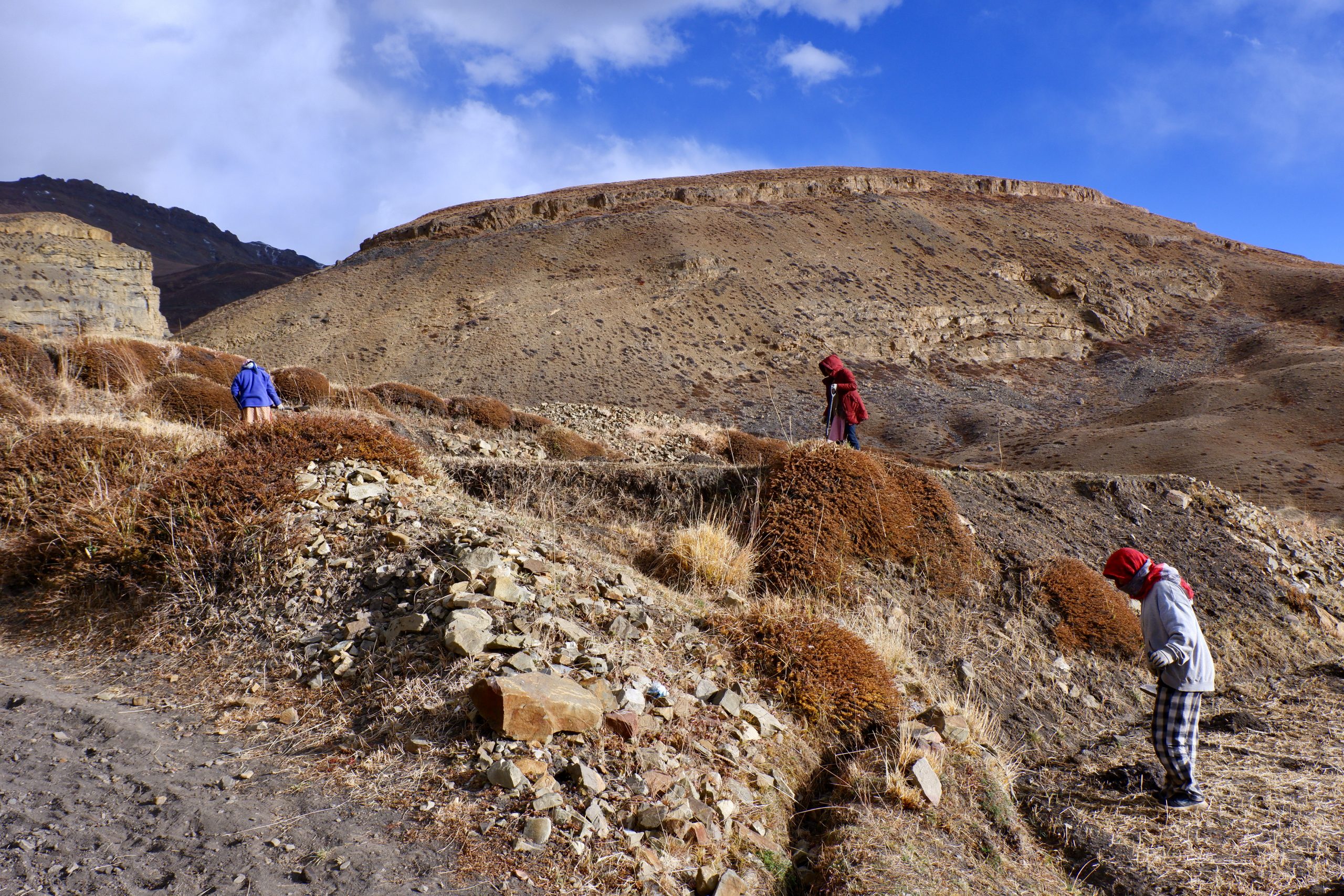 5
5
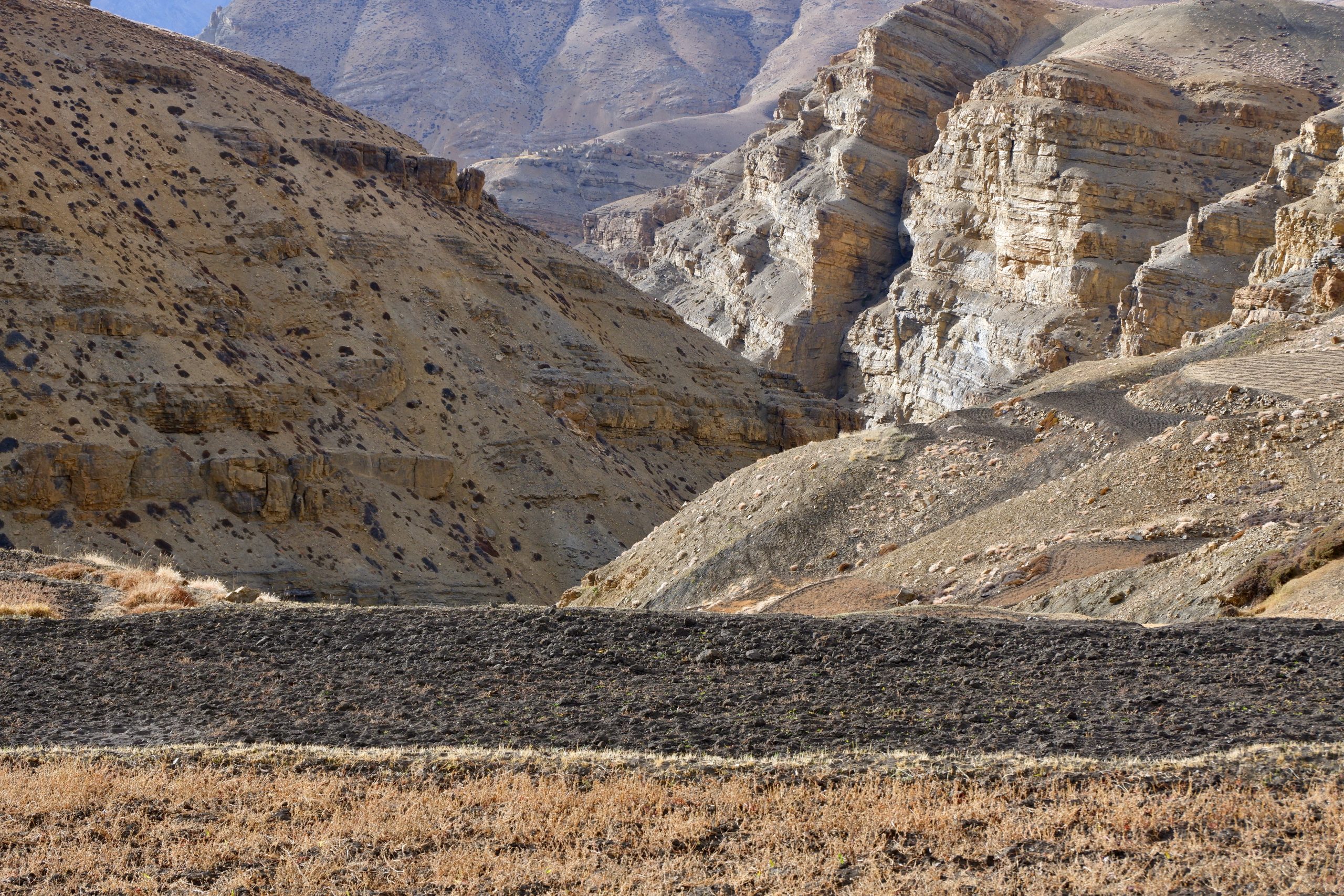 6
6
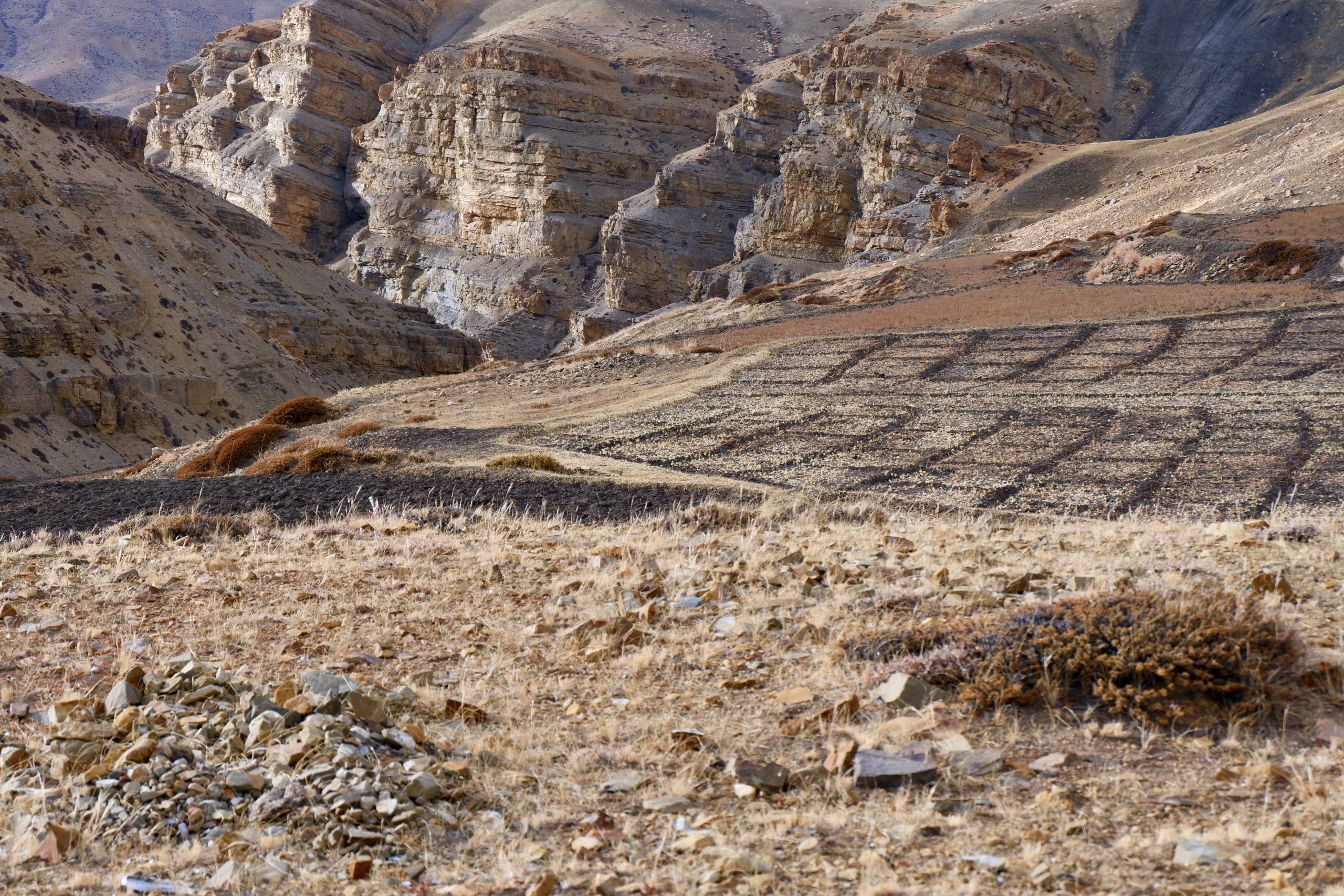 7
7
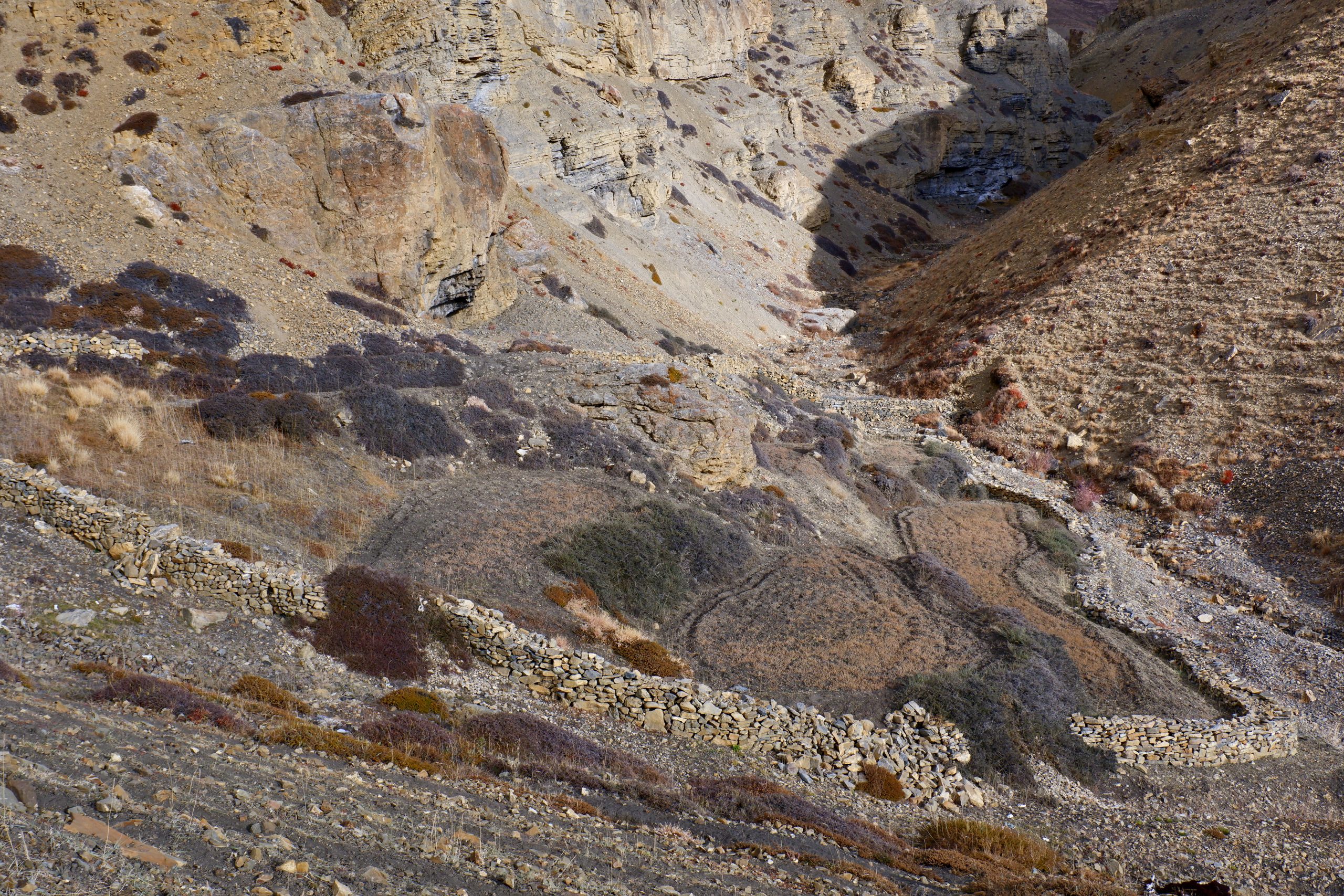 8
8
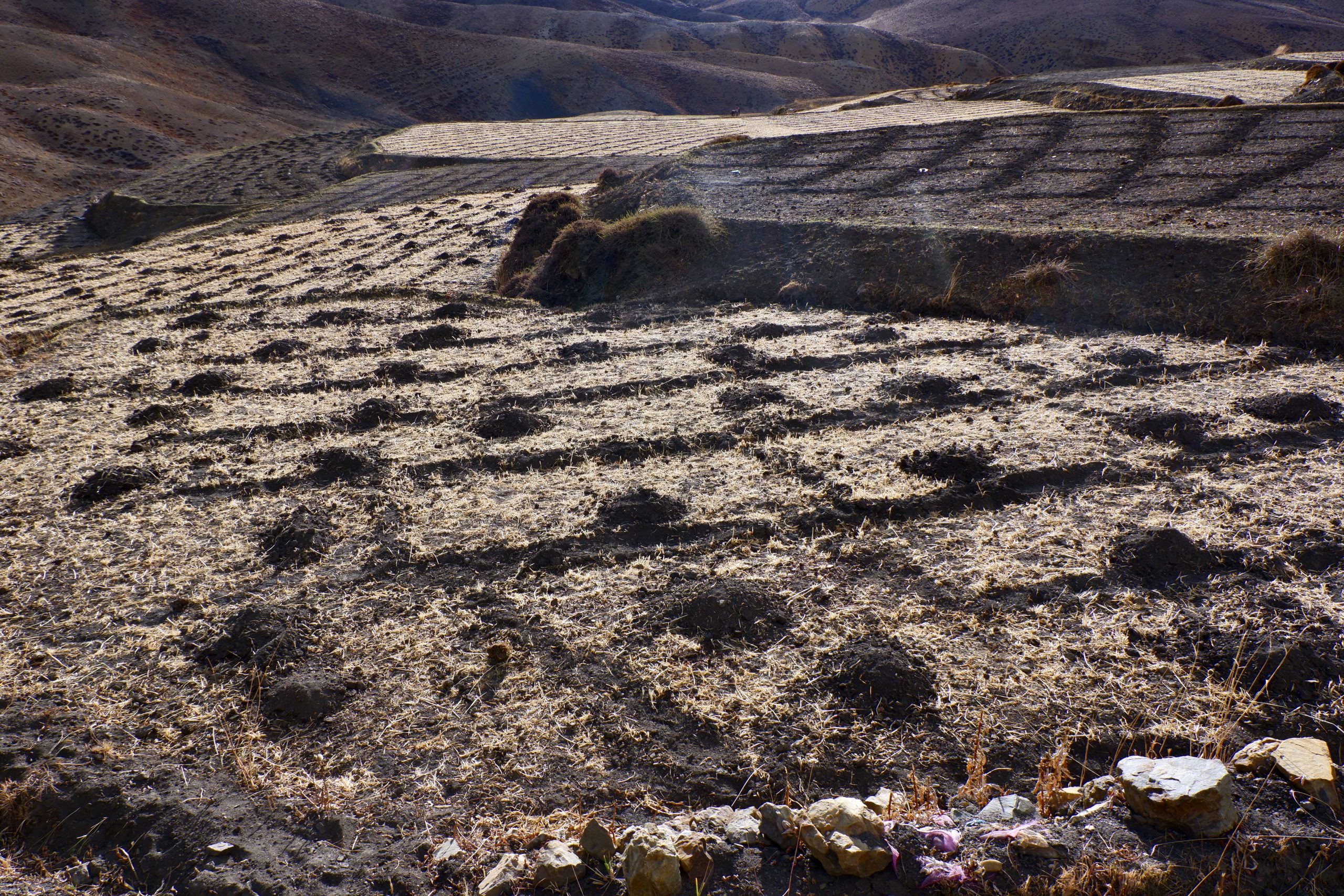 9
9
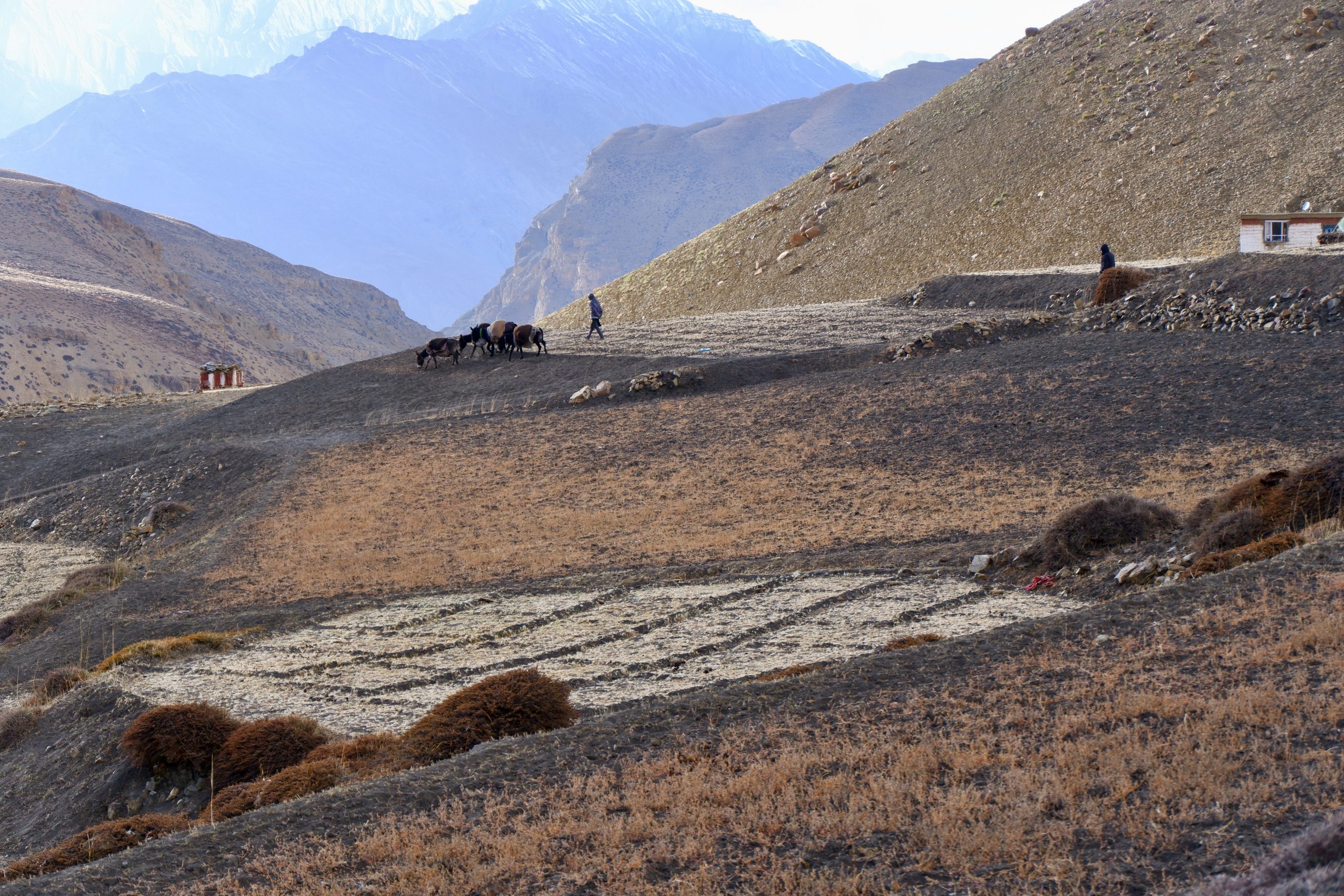 10
10
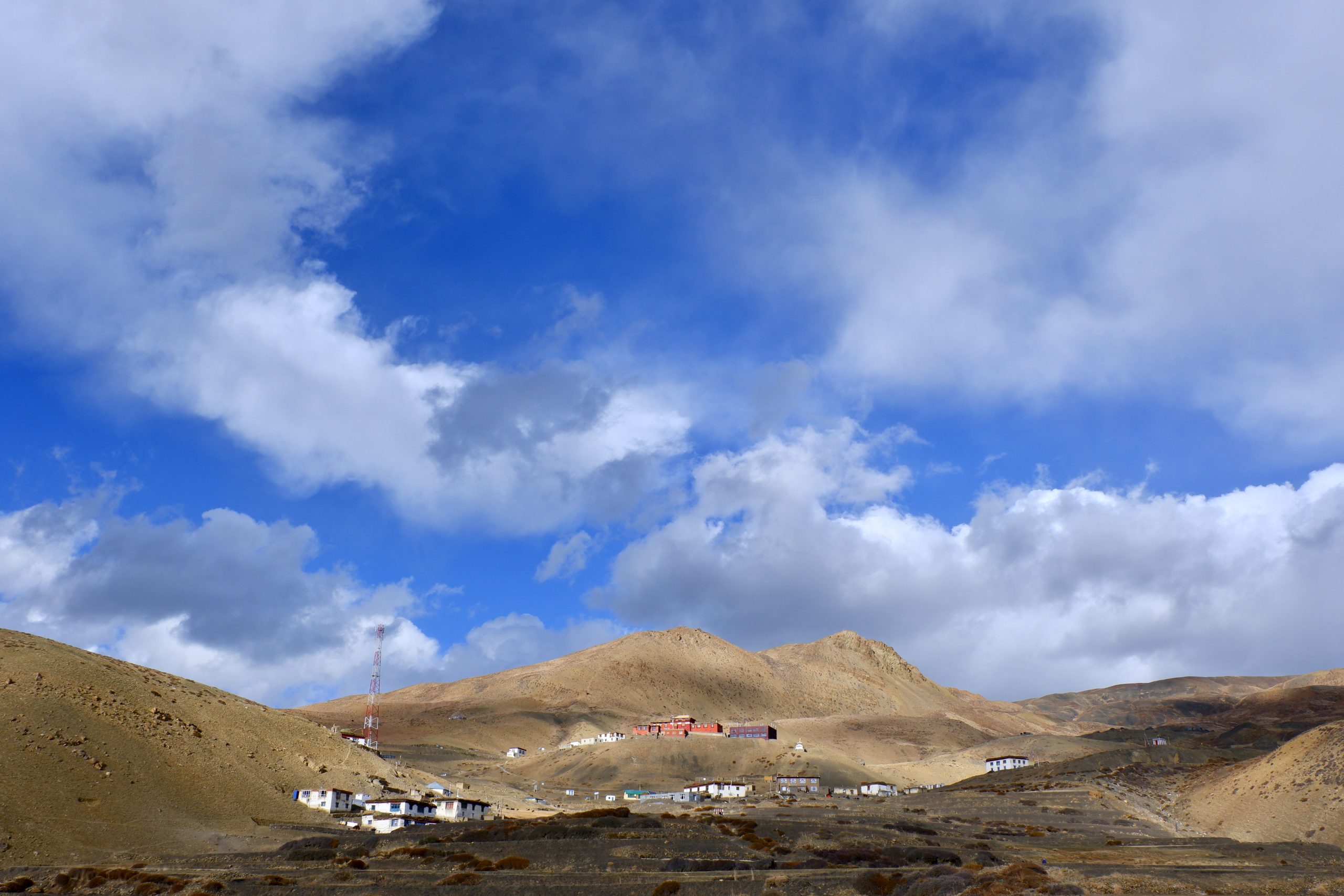 11
11
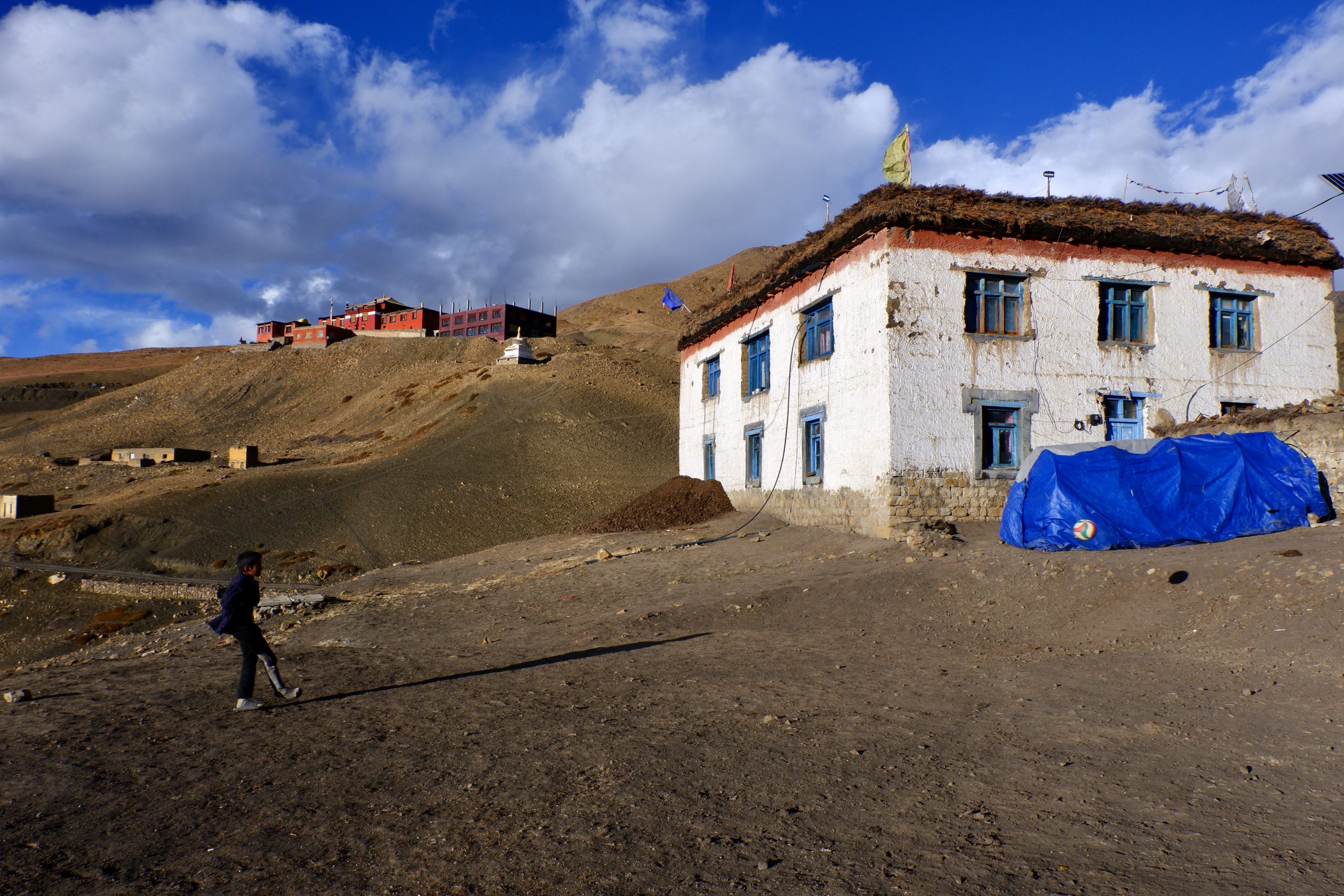 12
12
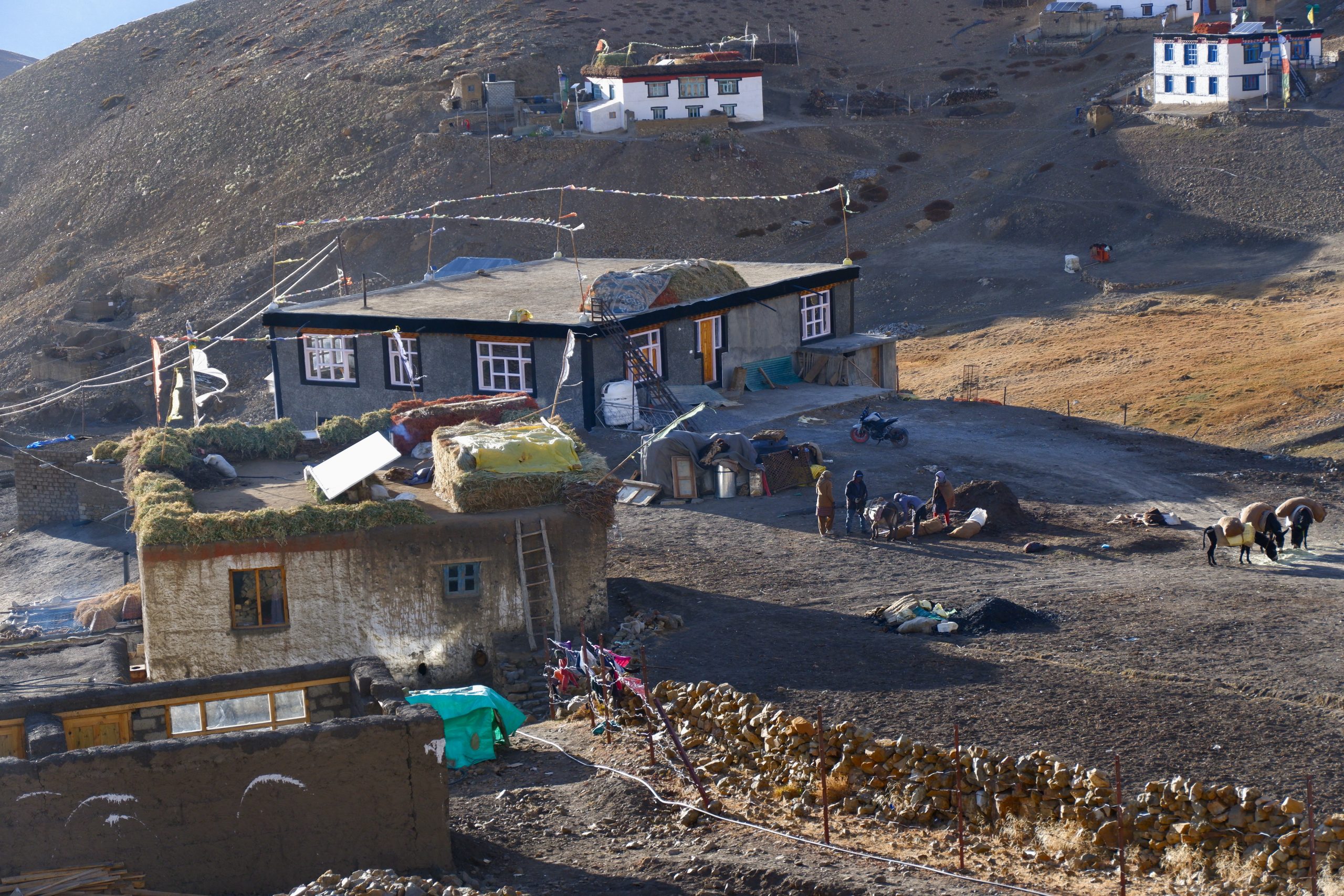 13
13
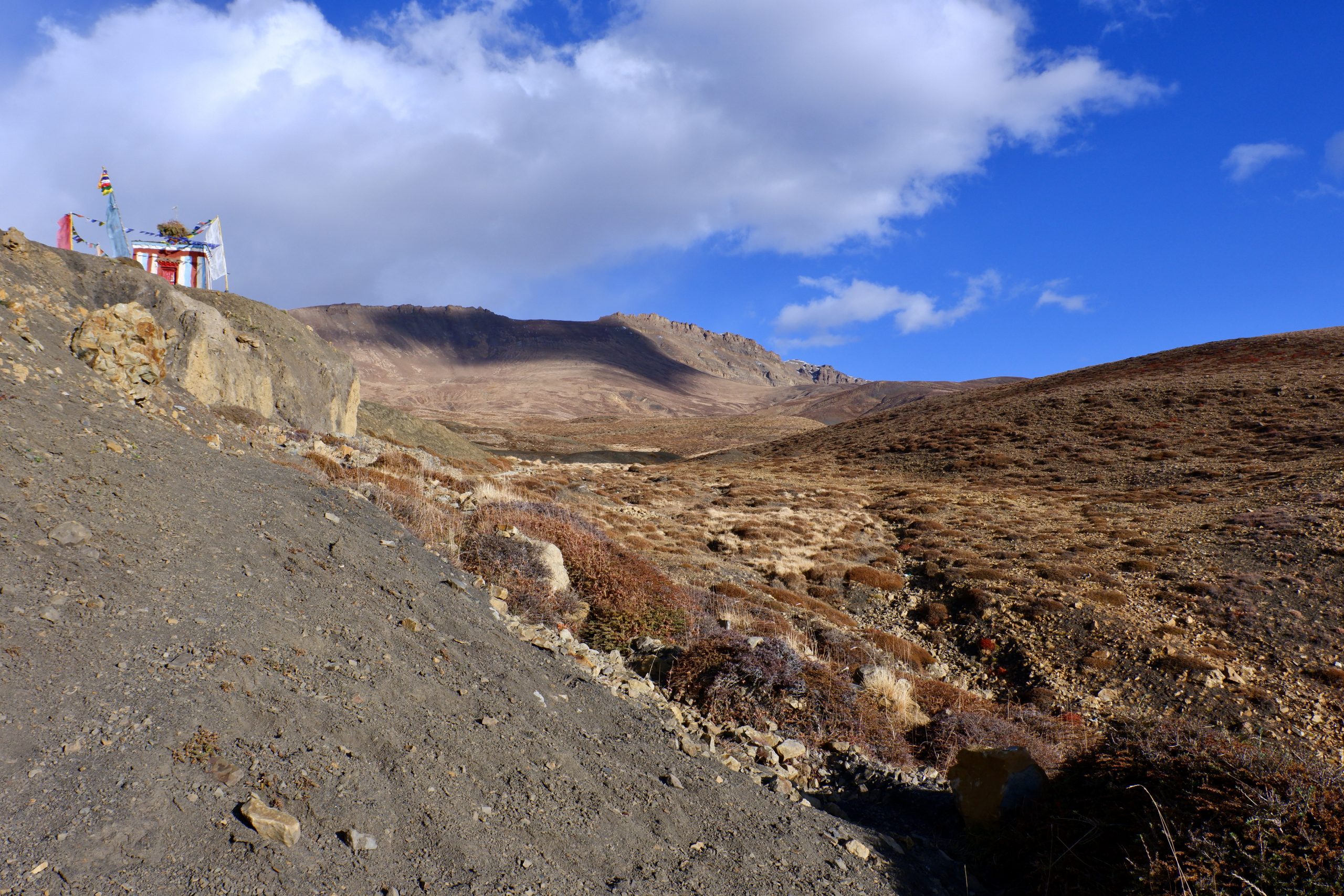 14
14
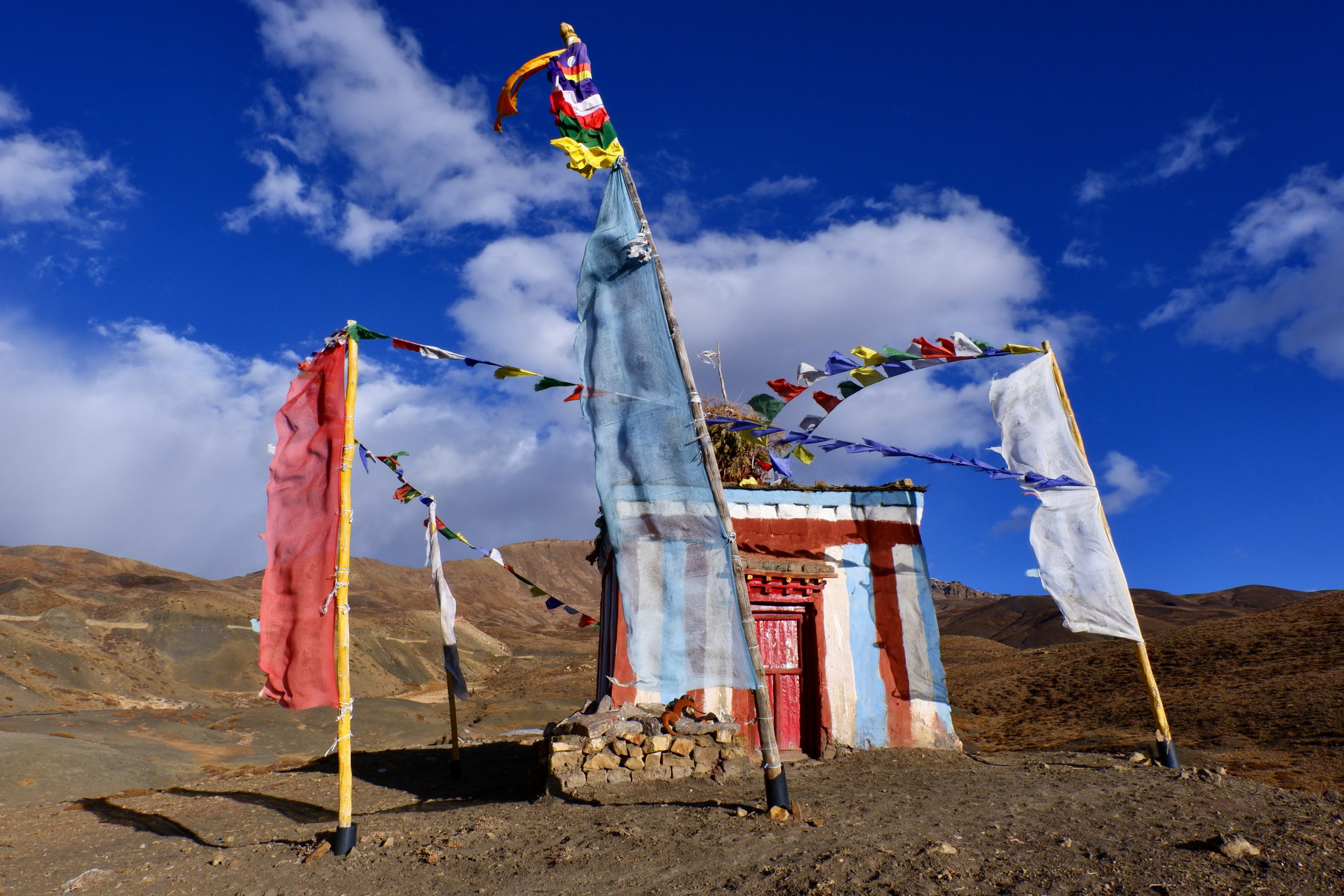 15
15
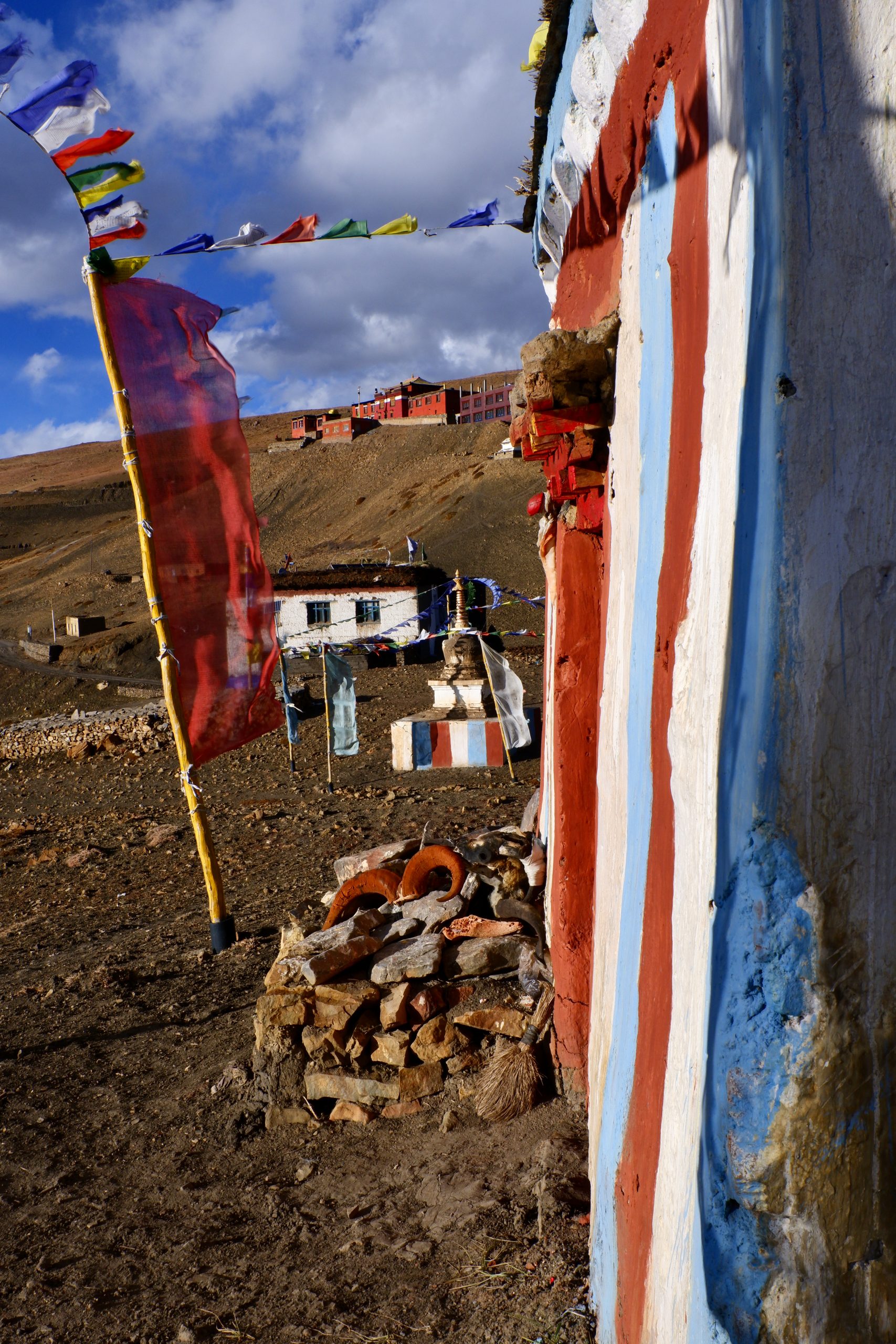 16
16
The homestay was different this time: Tsering was alone at home, her husband in Chandigarh, the children at school in Kaza, where her parents also lived. She scurried around the field with the neighbours and came in late to make dinner. She knows almost no English and we looked at pictures and videos on her mobile phone. The night was freezing cold and the toilet corridor led down a steep wooden staircase to the compost toilet. The weather forecast called for snow the next day – and people considered it to be true. The night was quite clear, though.
Anyway, I thought it was at least really cold. Altitude problems were limited. At least! I was still little nervously waiting for the morning.
